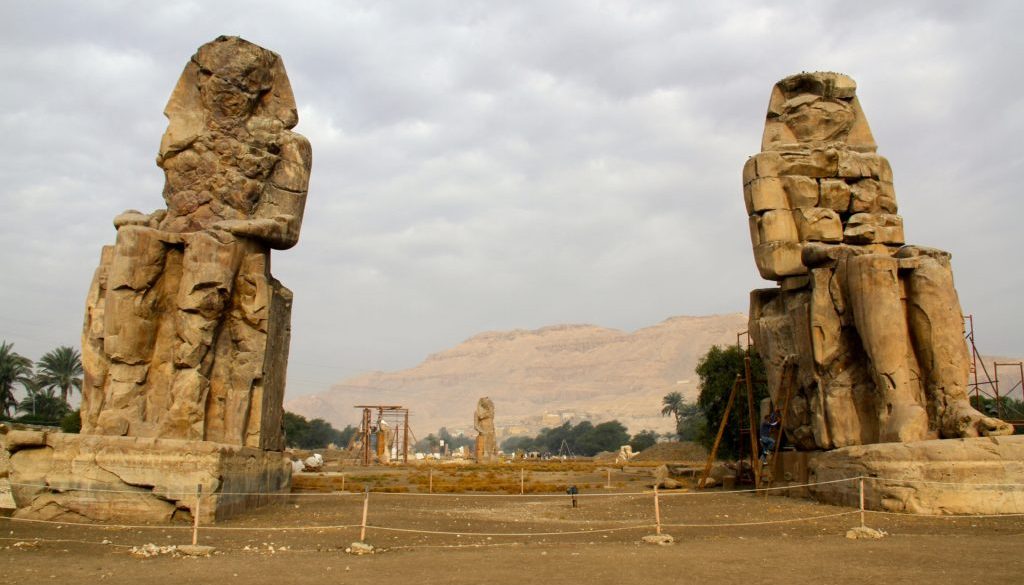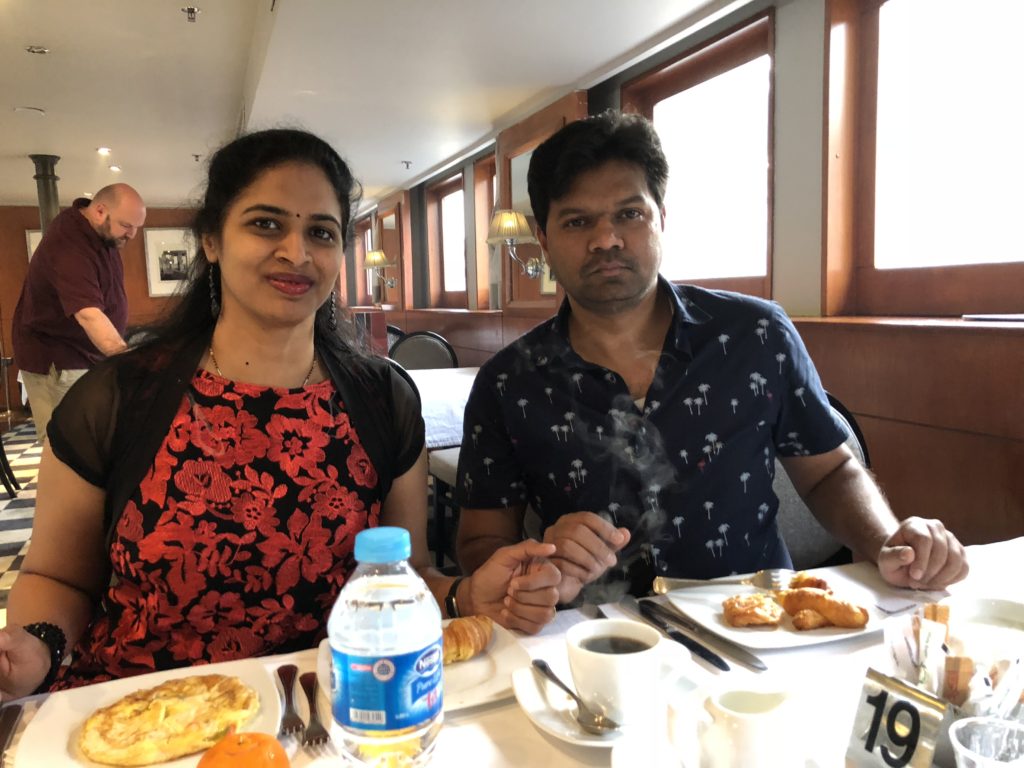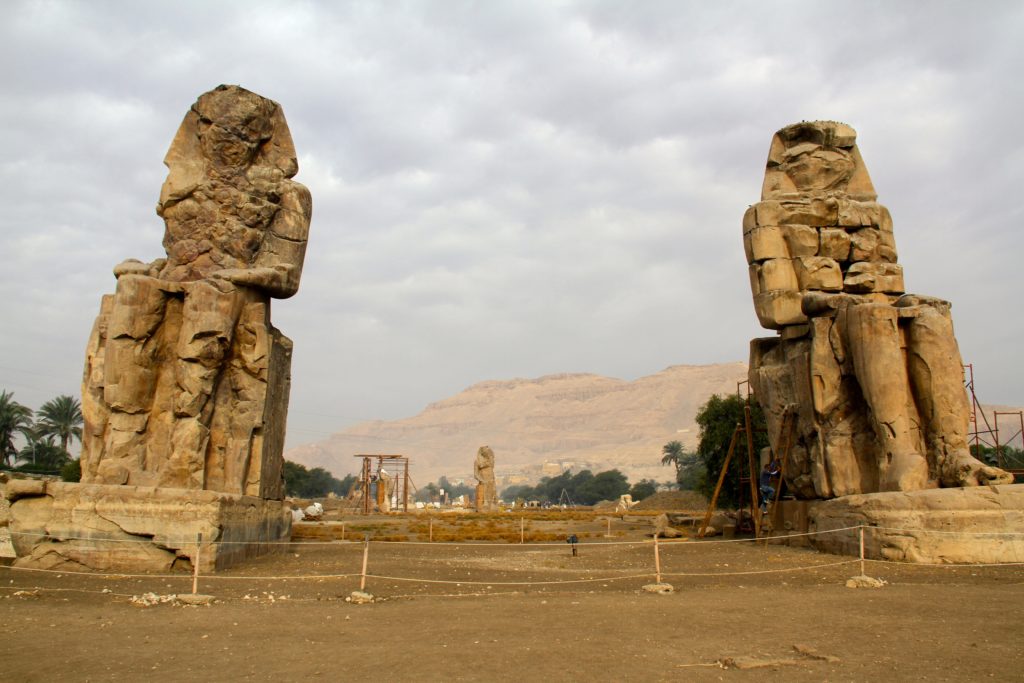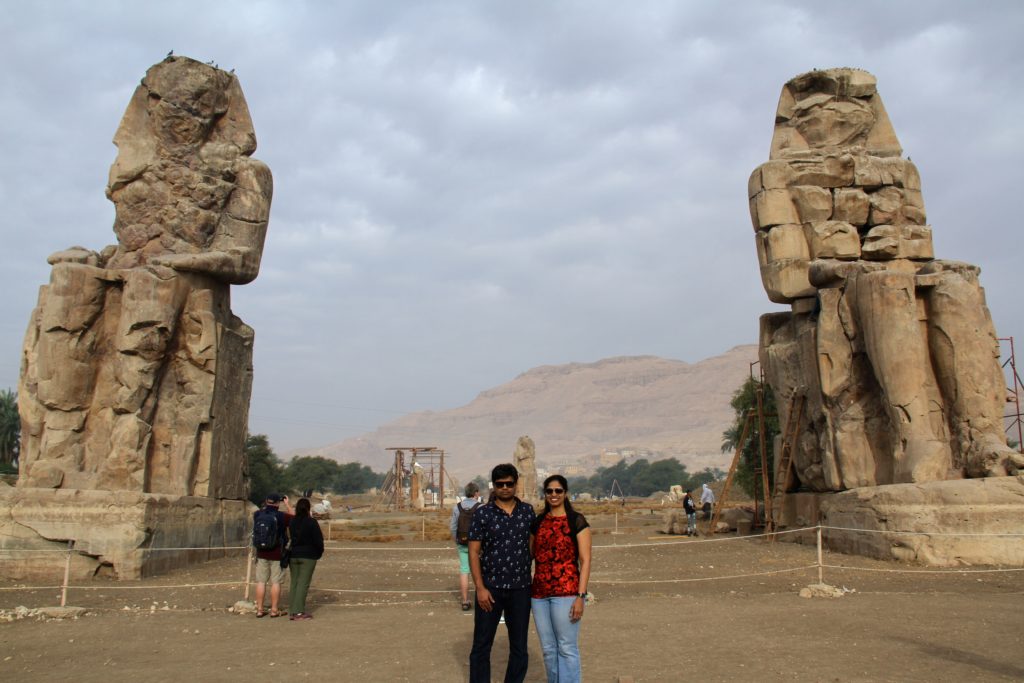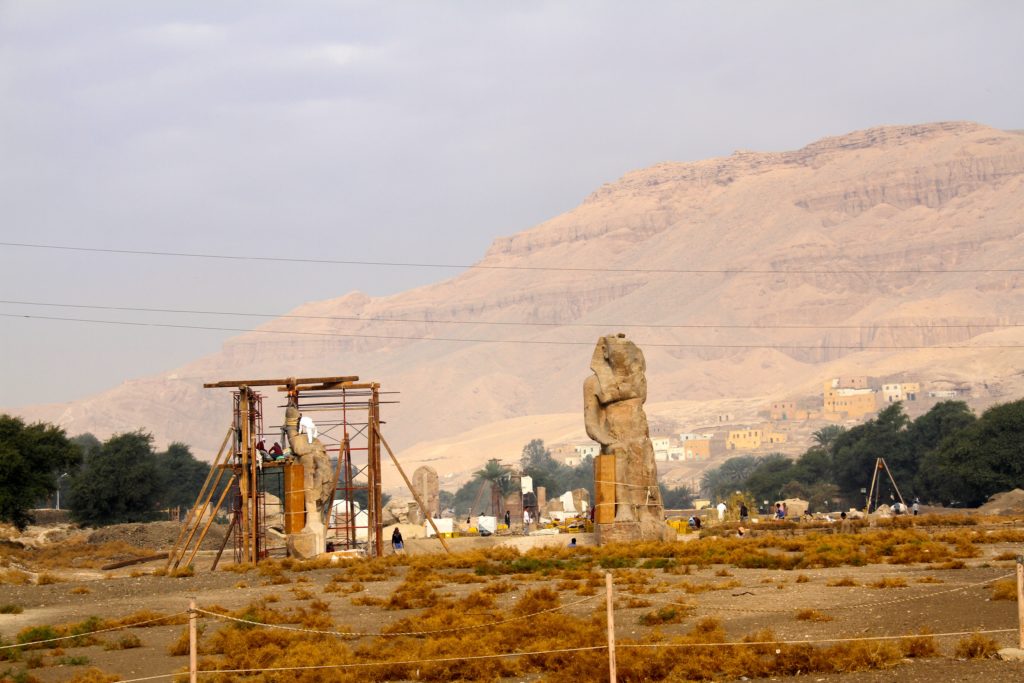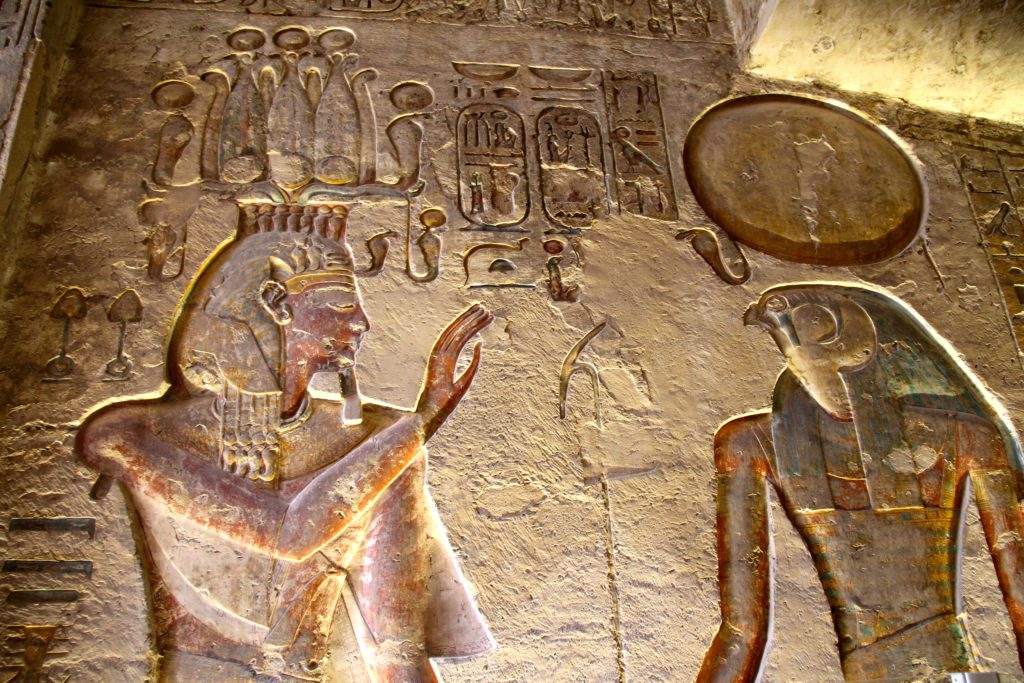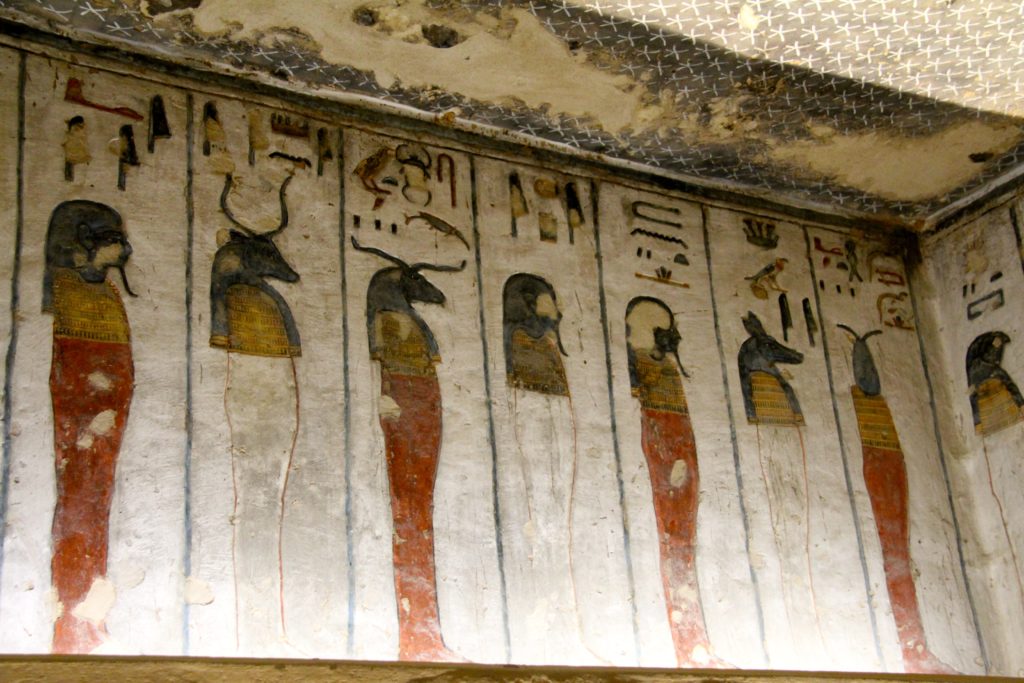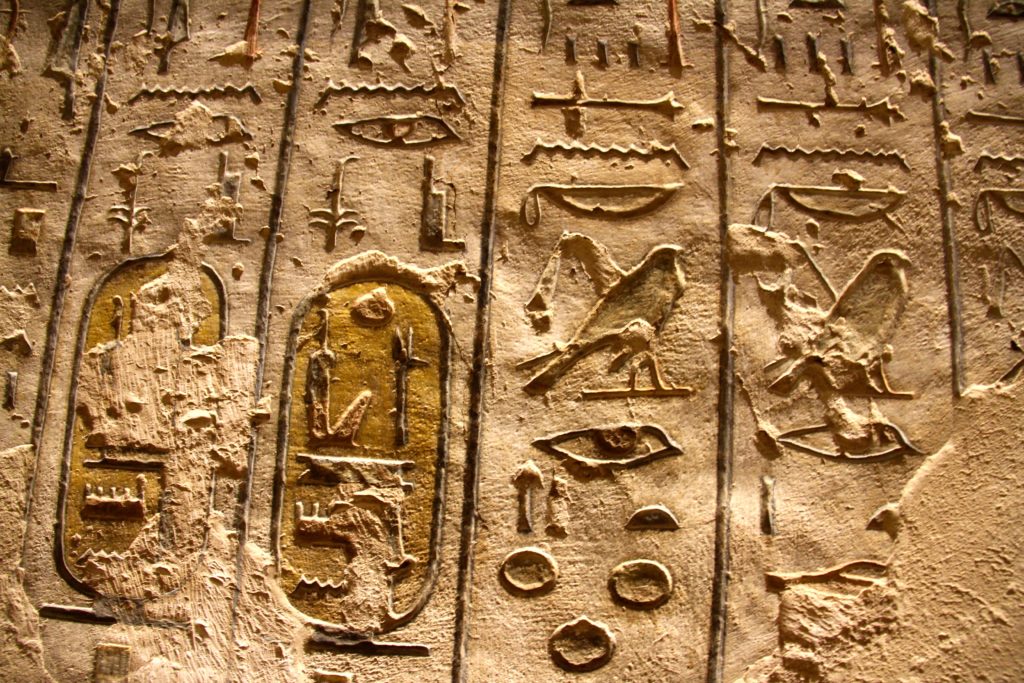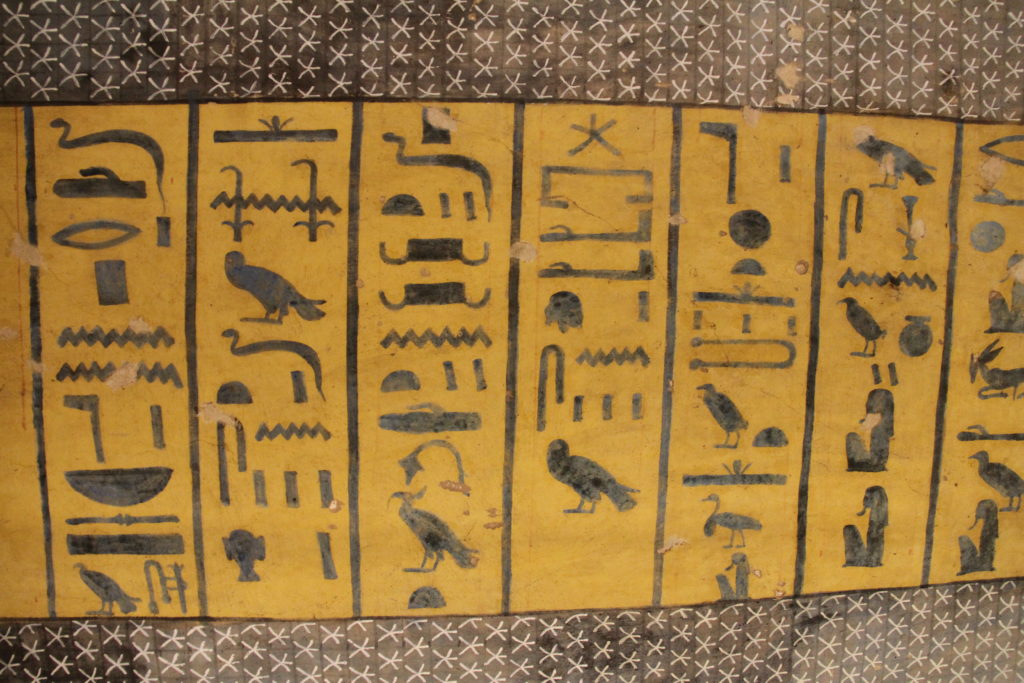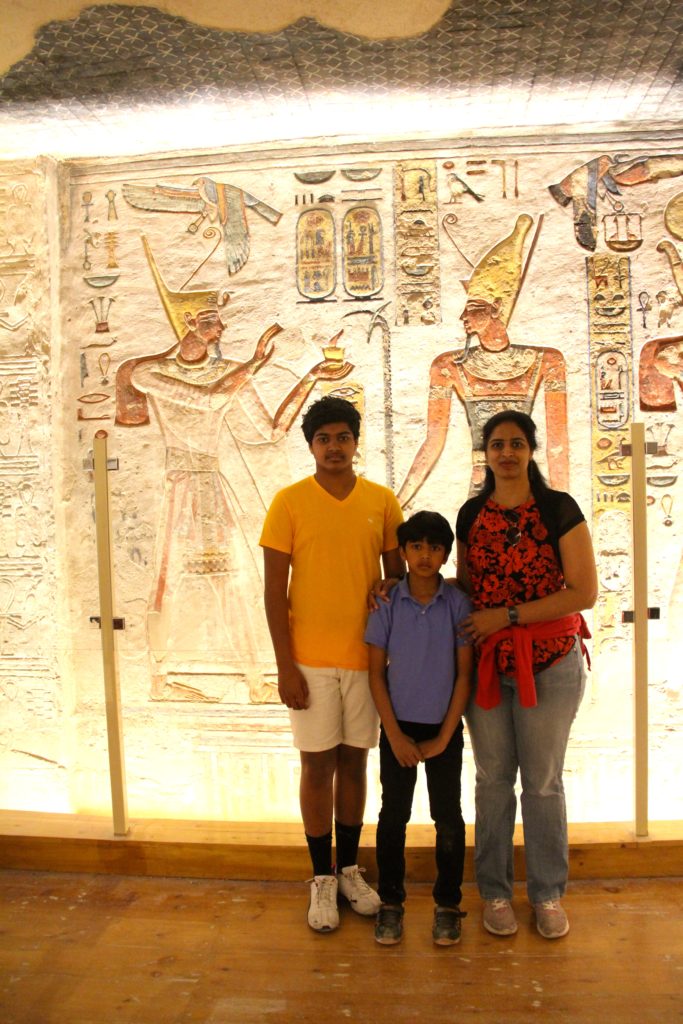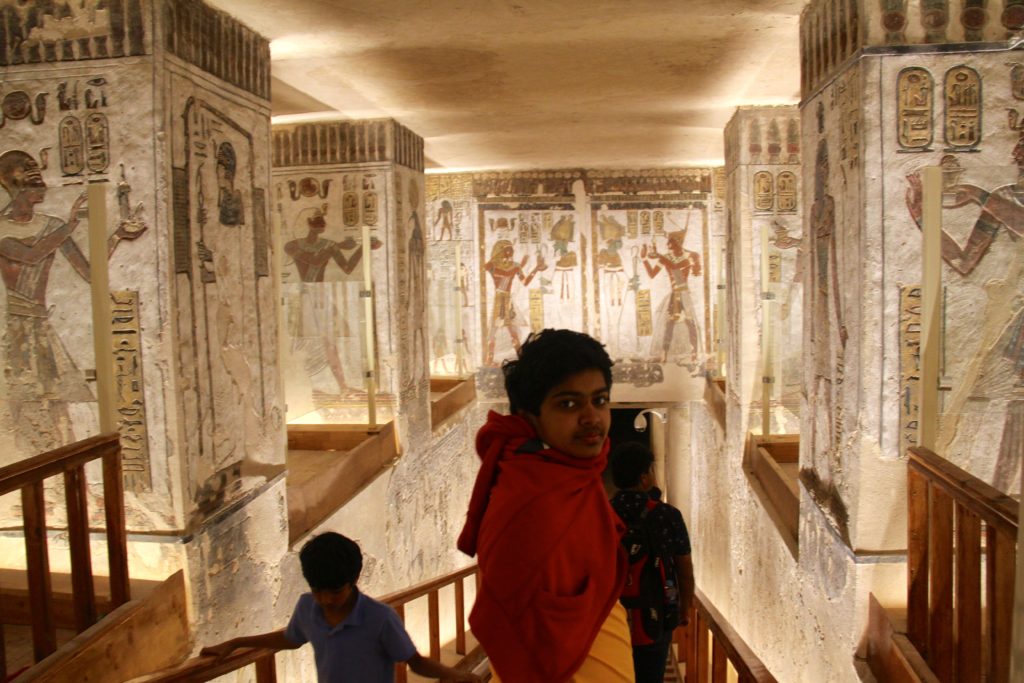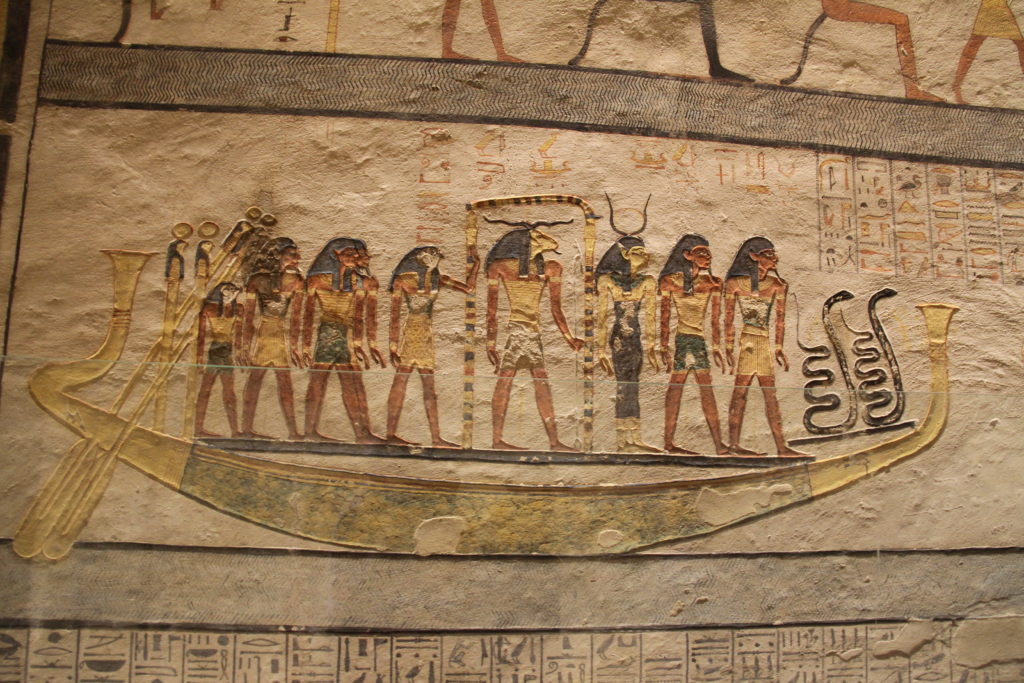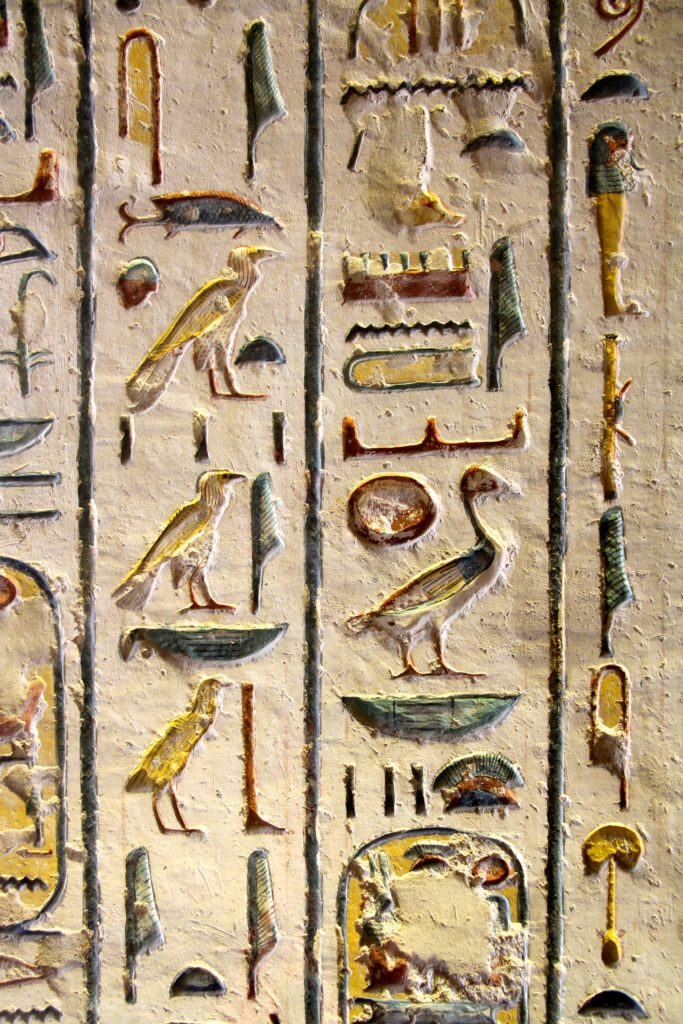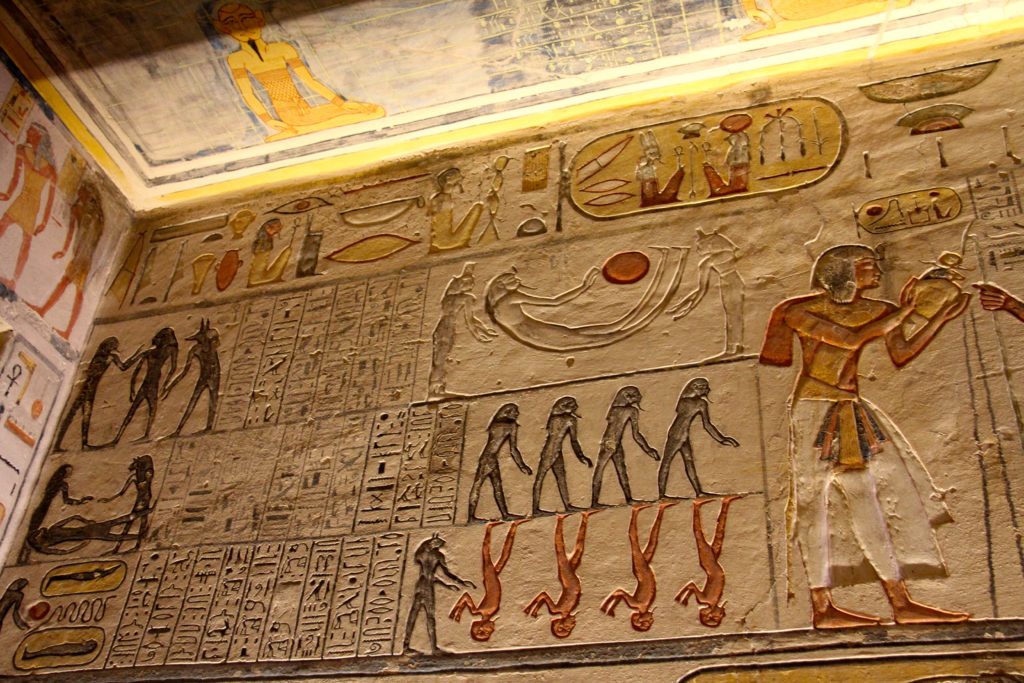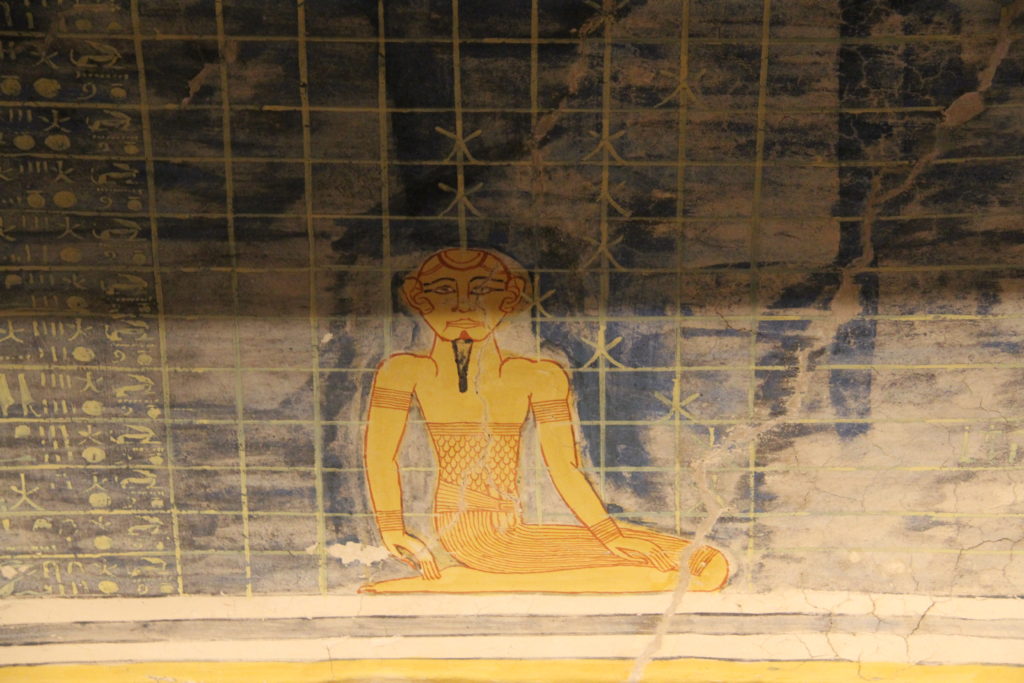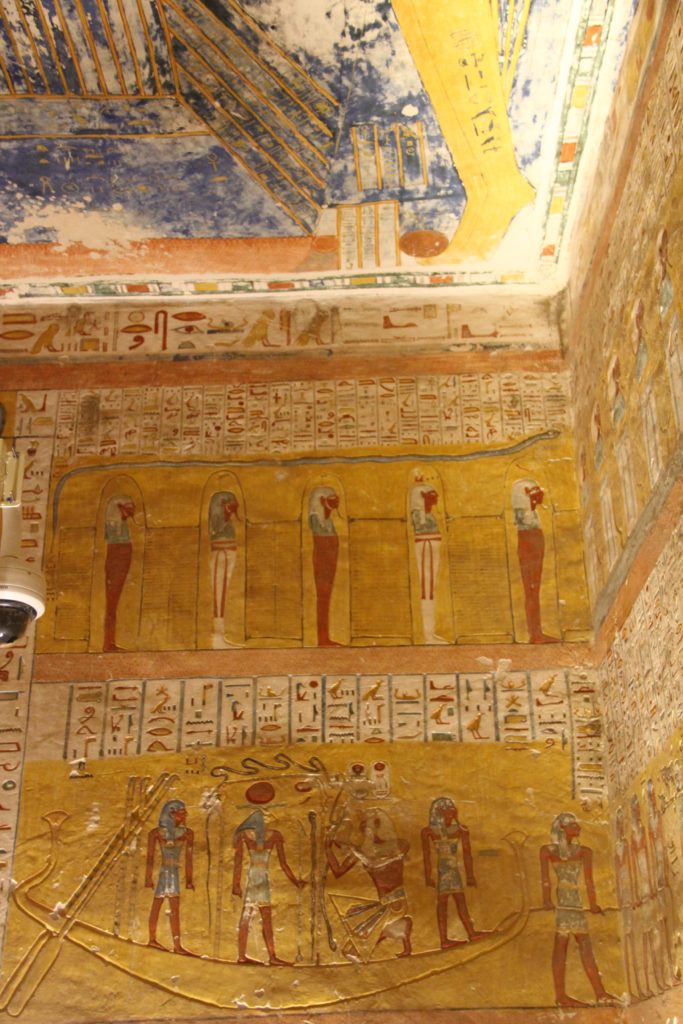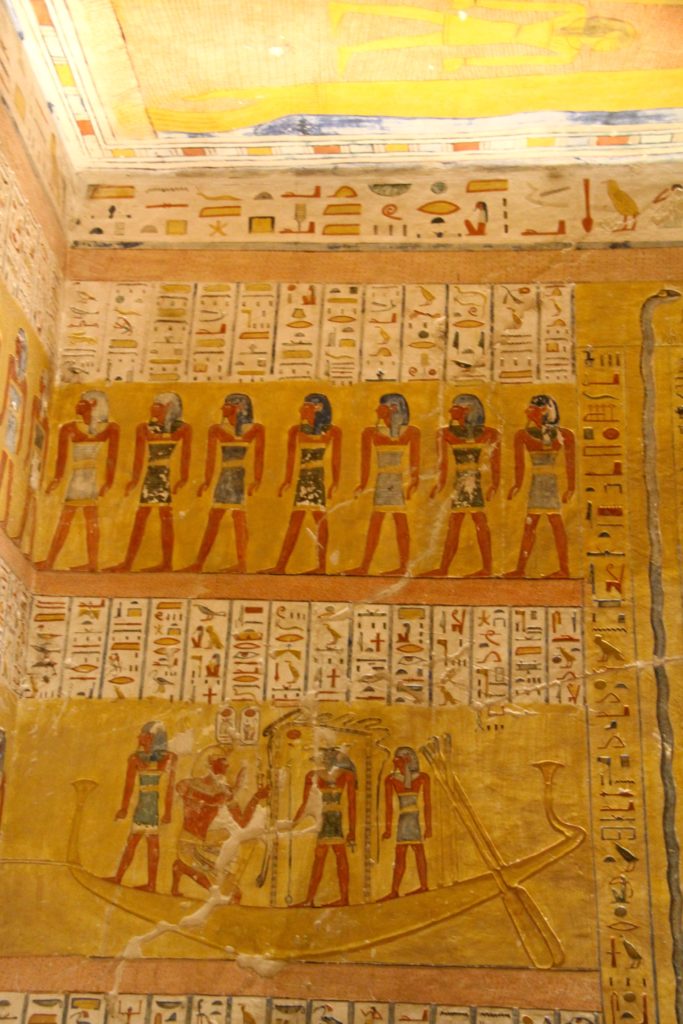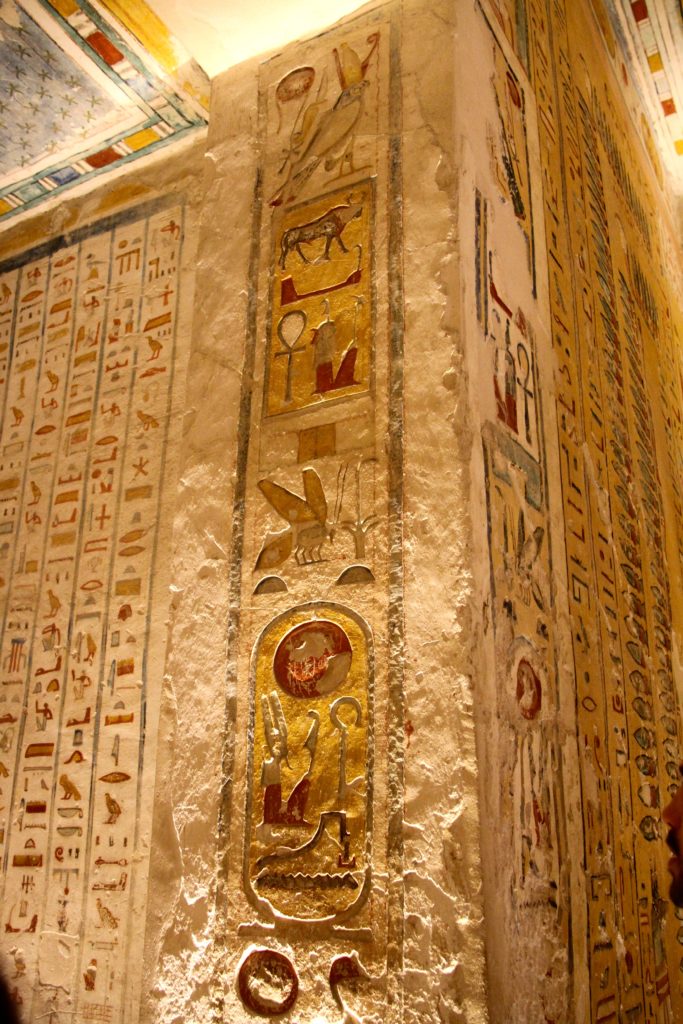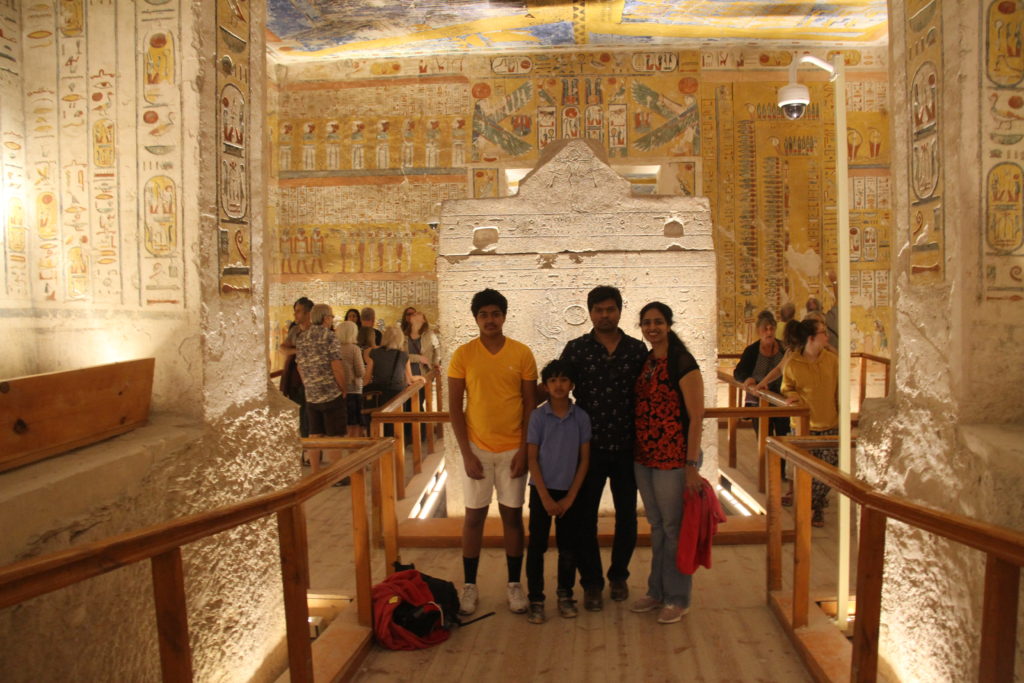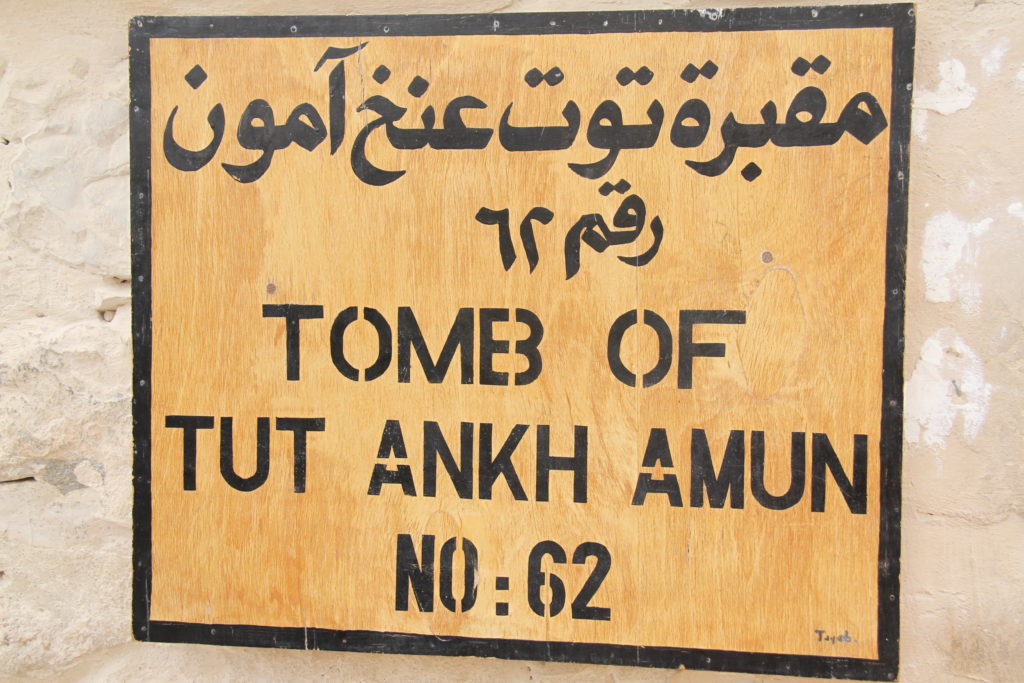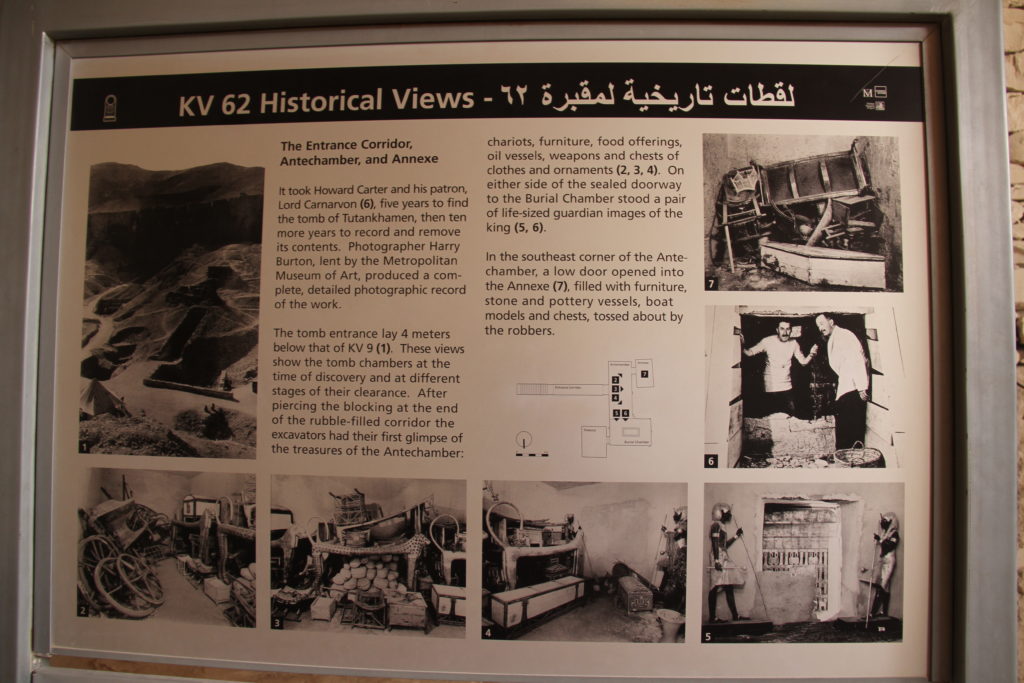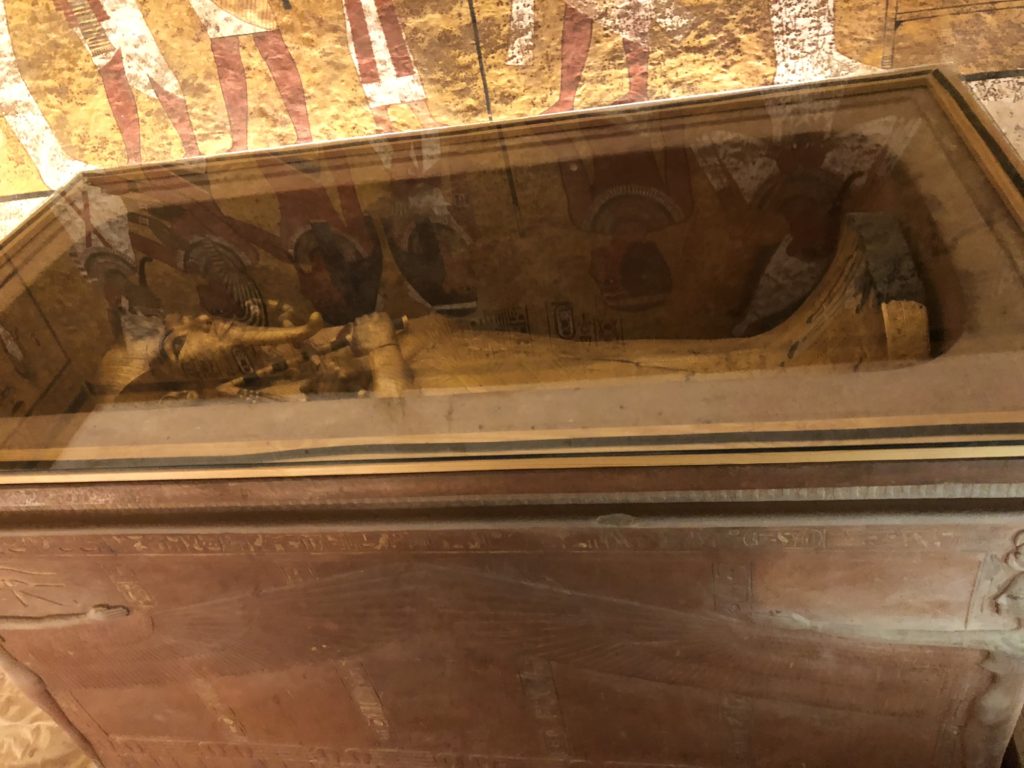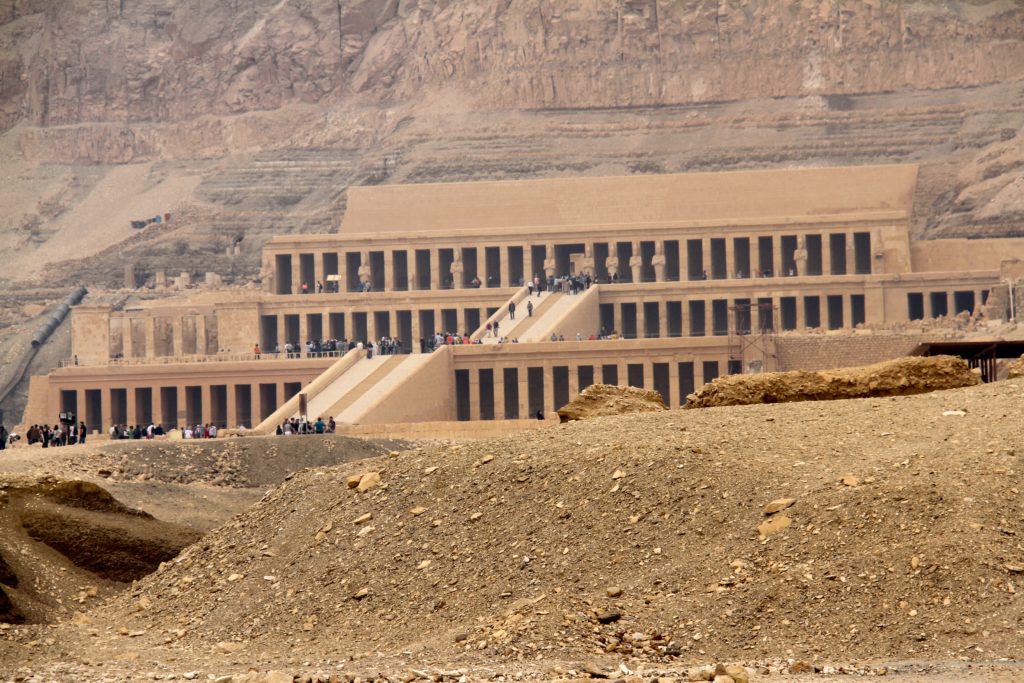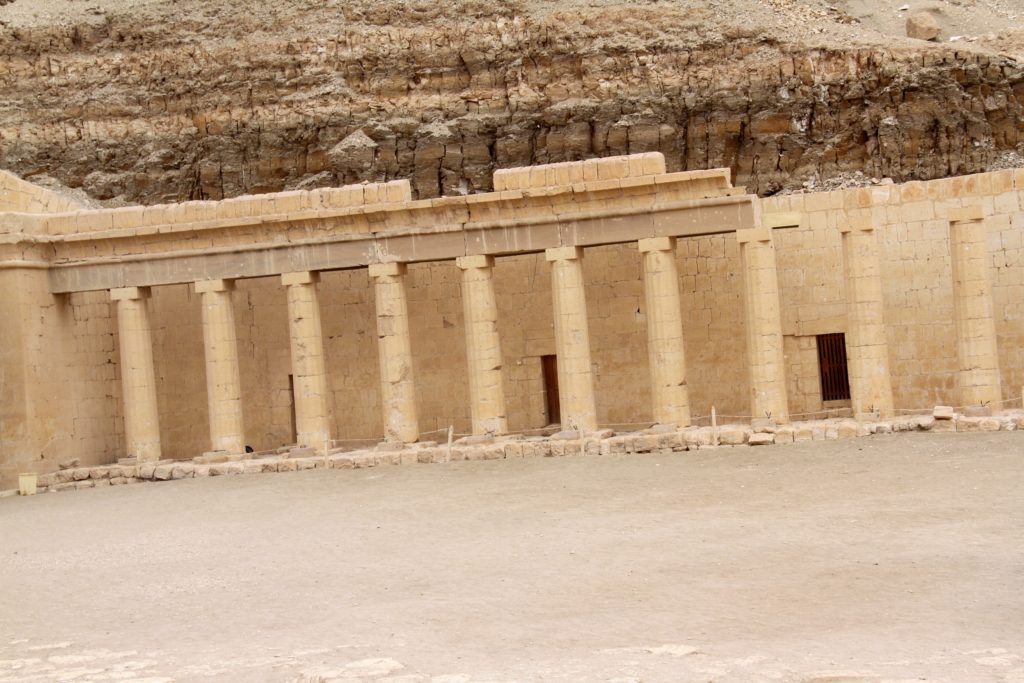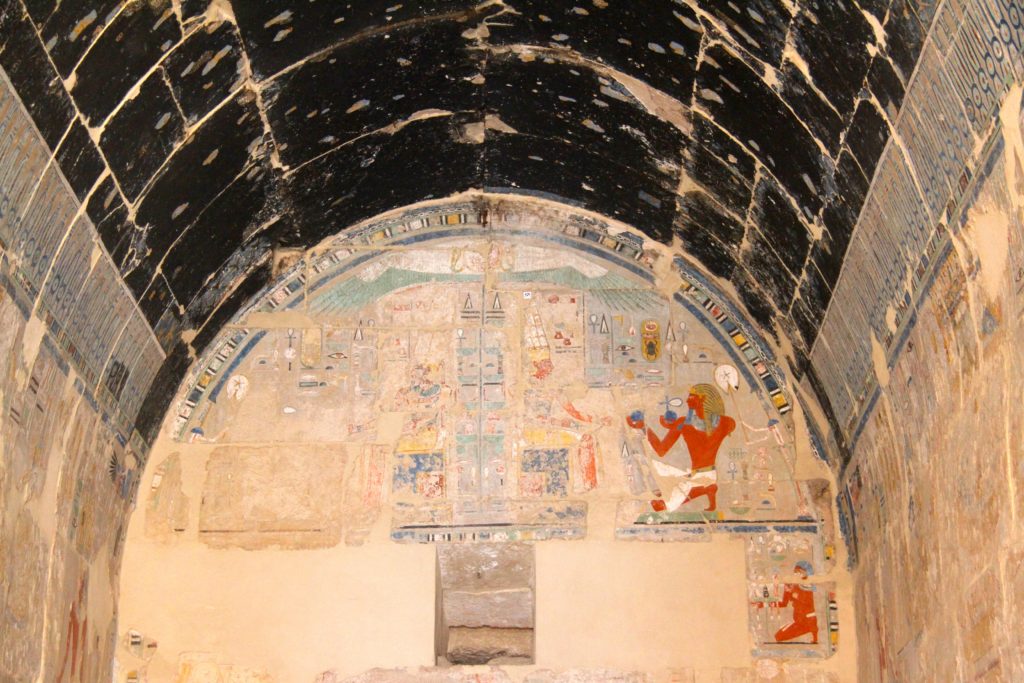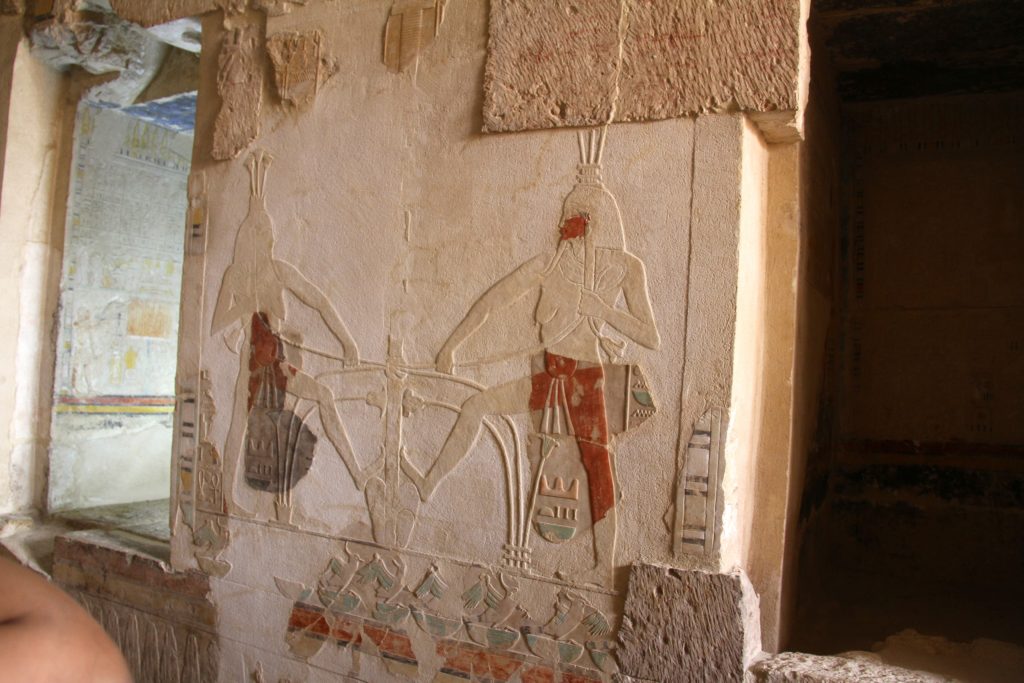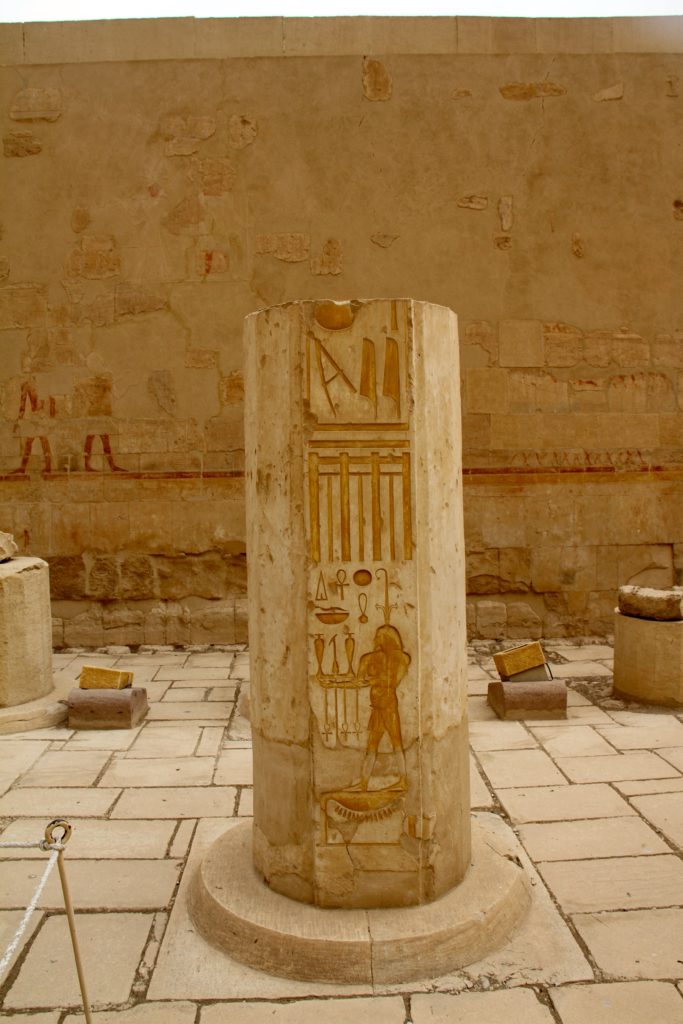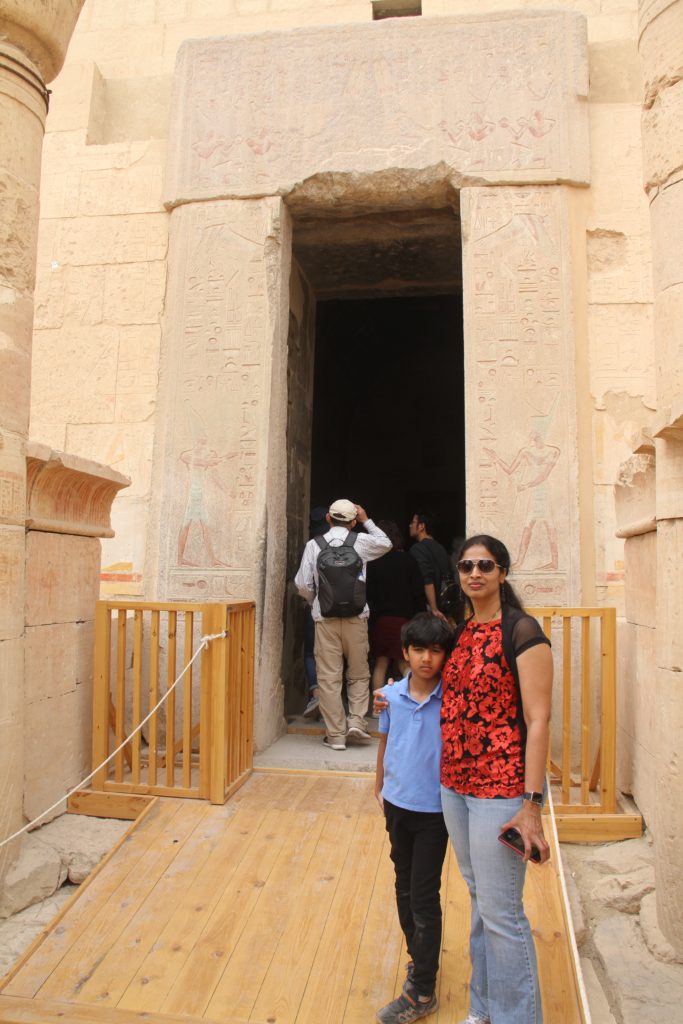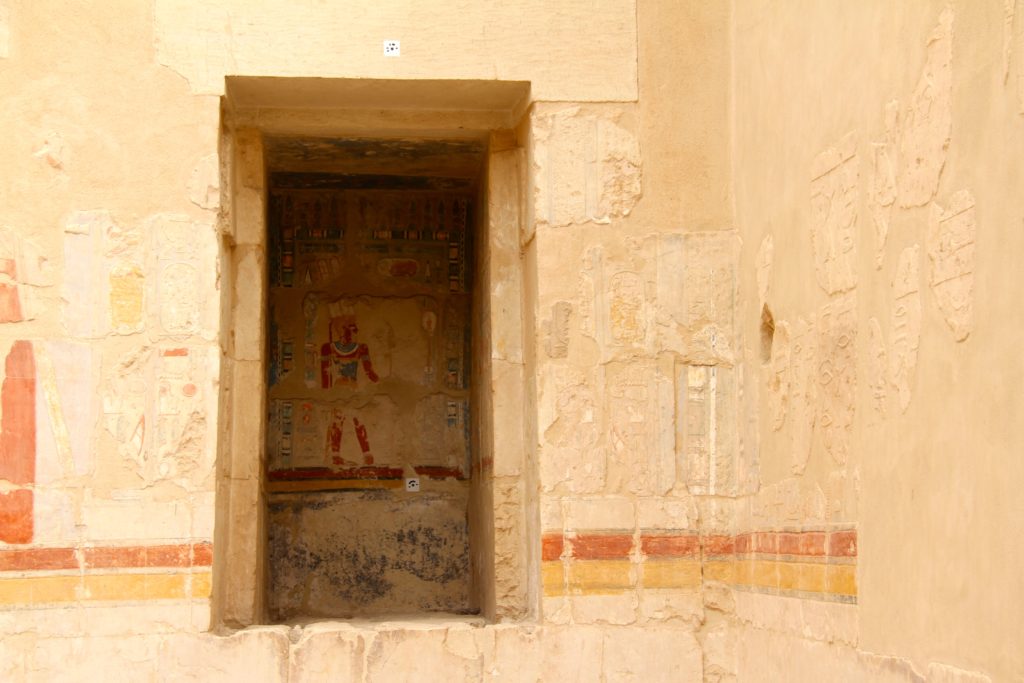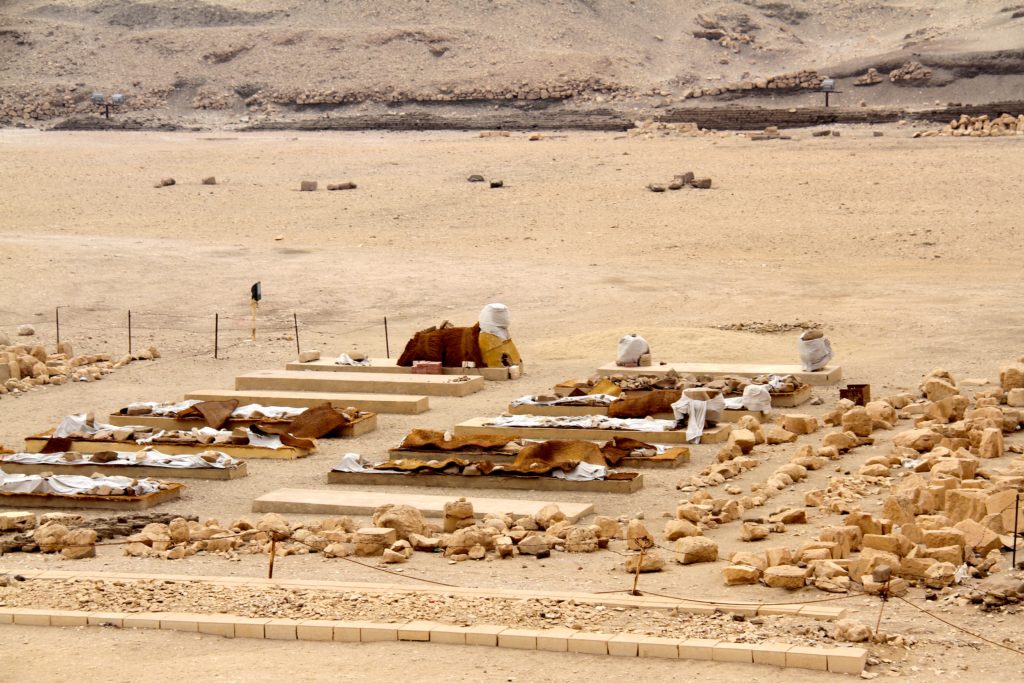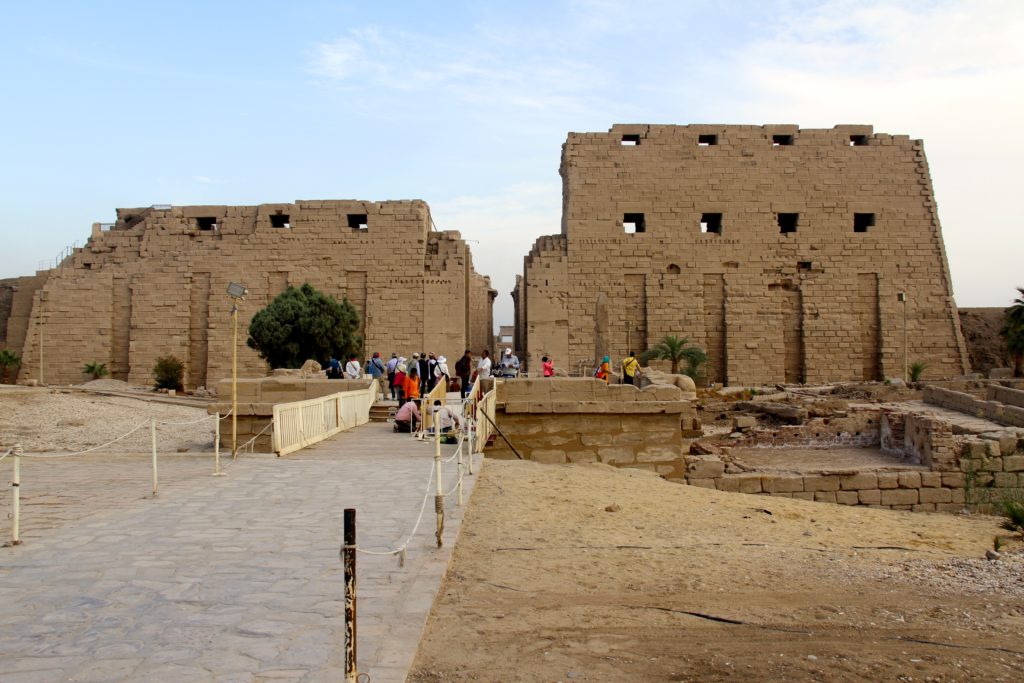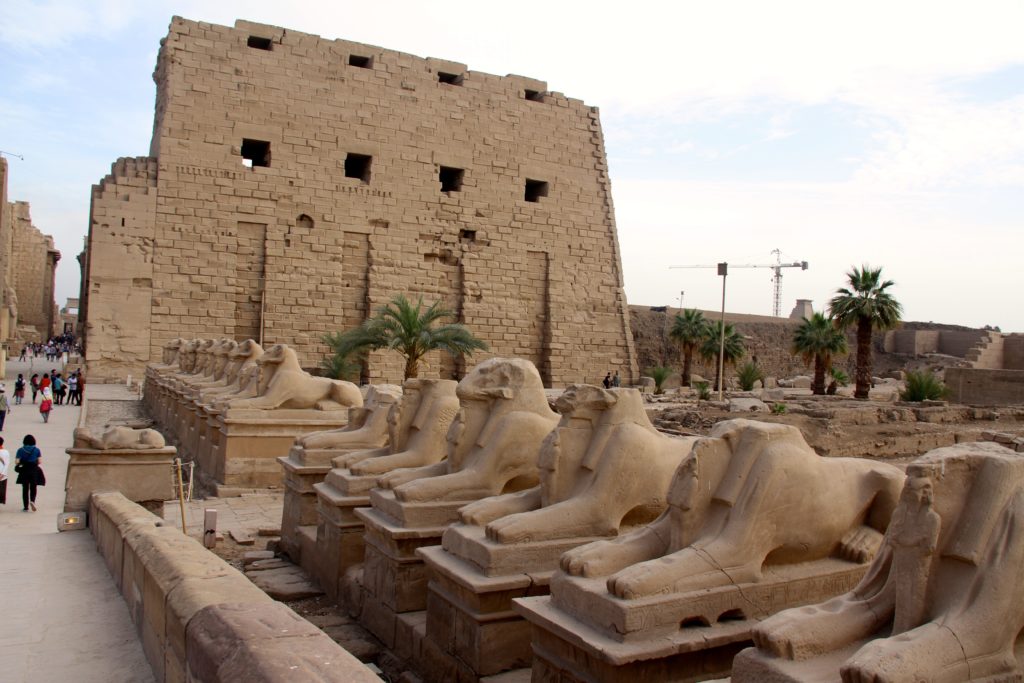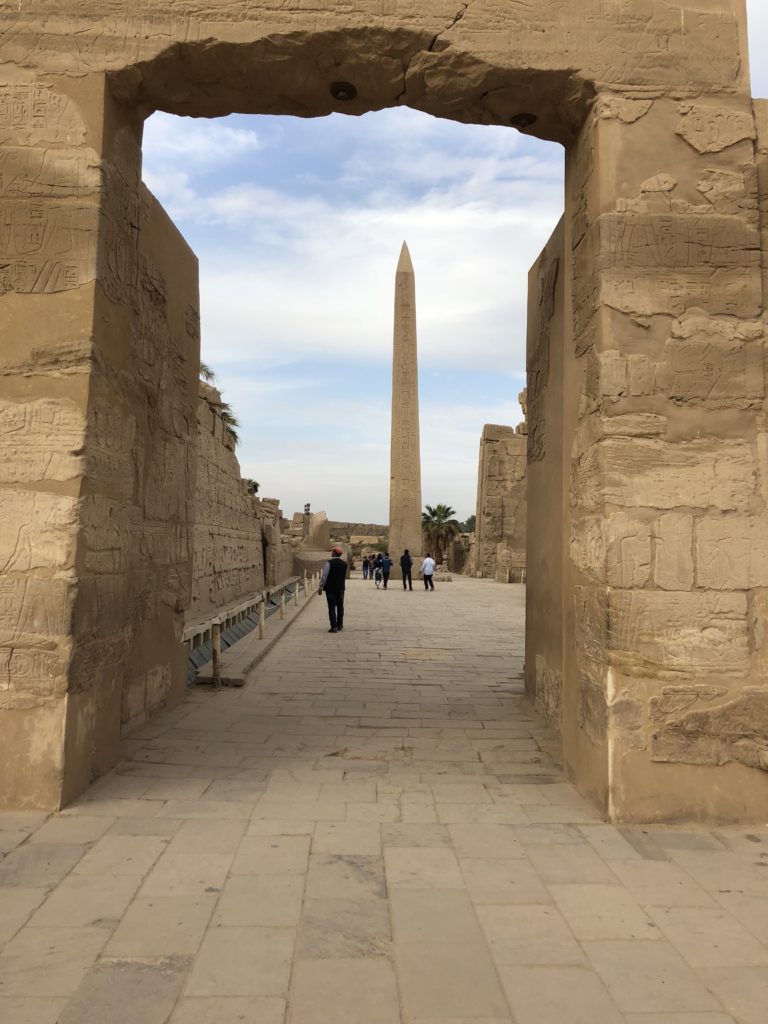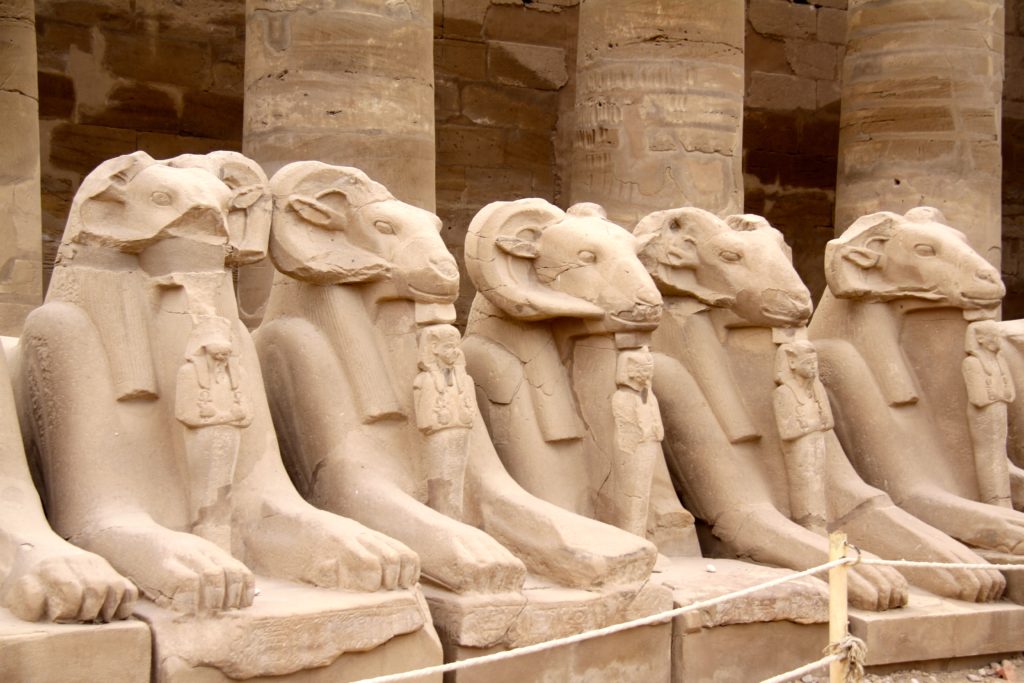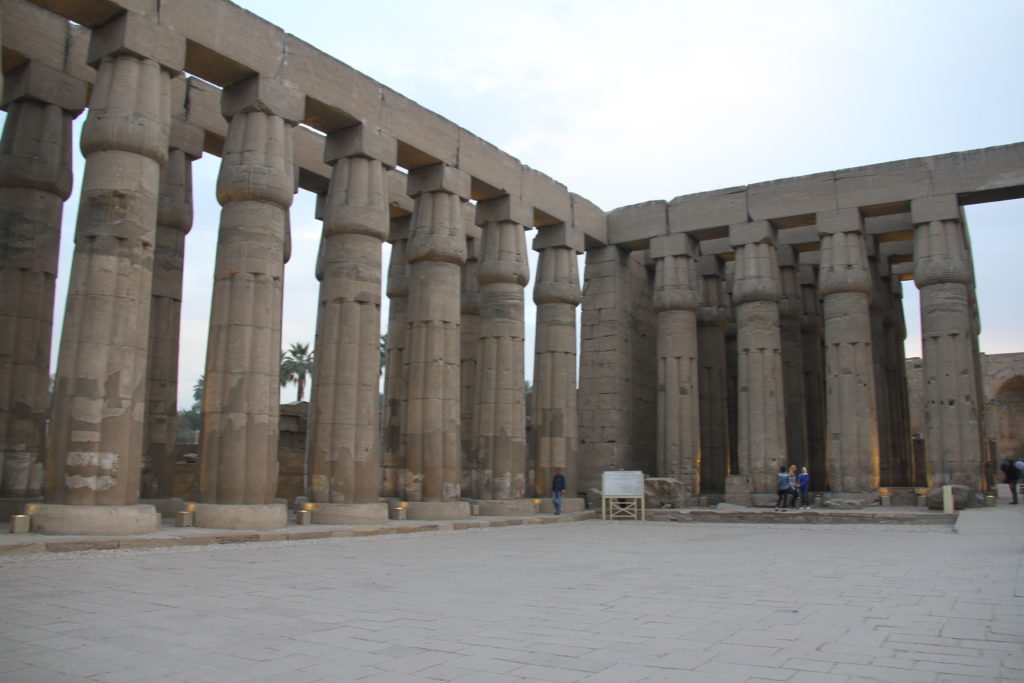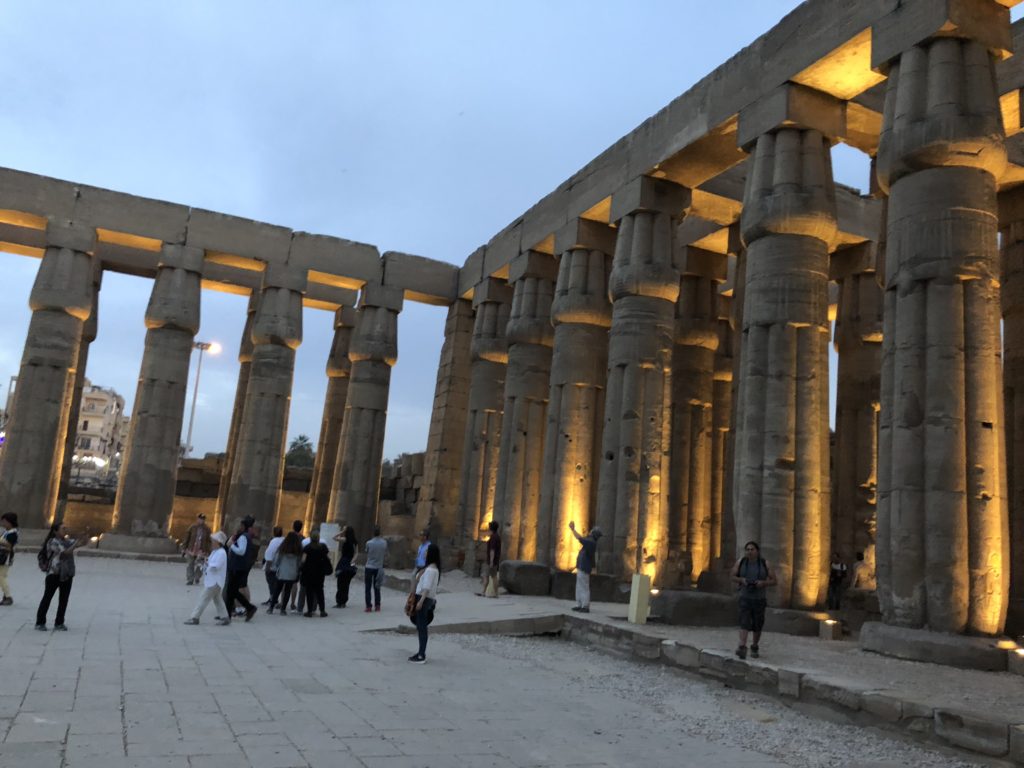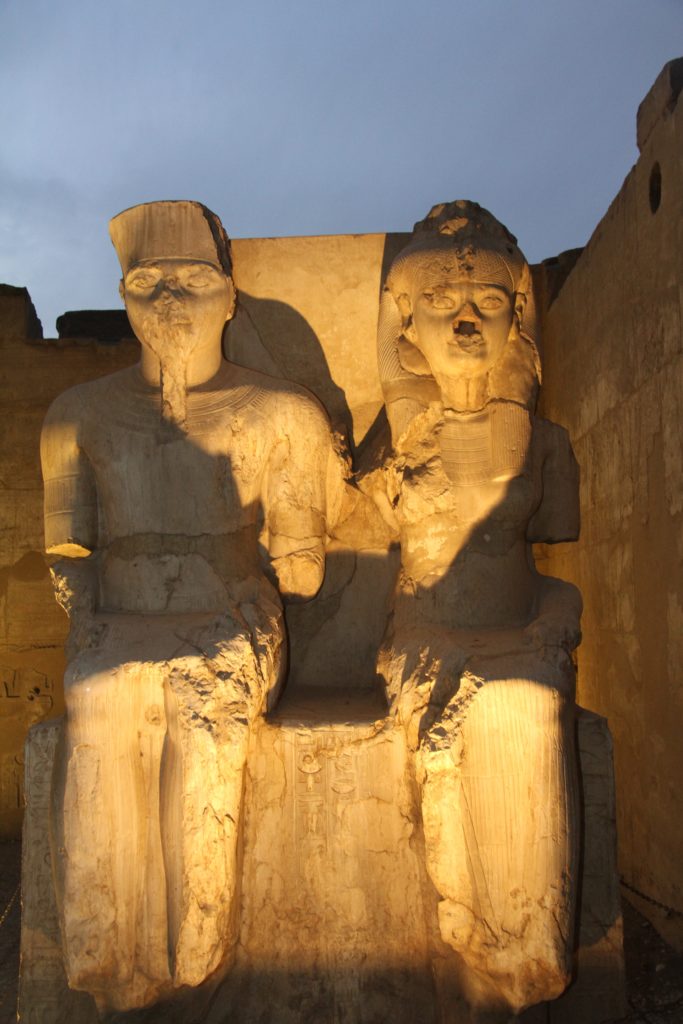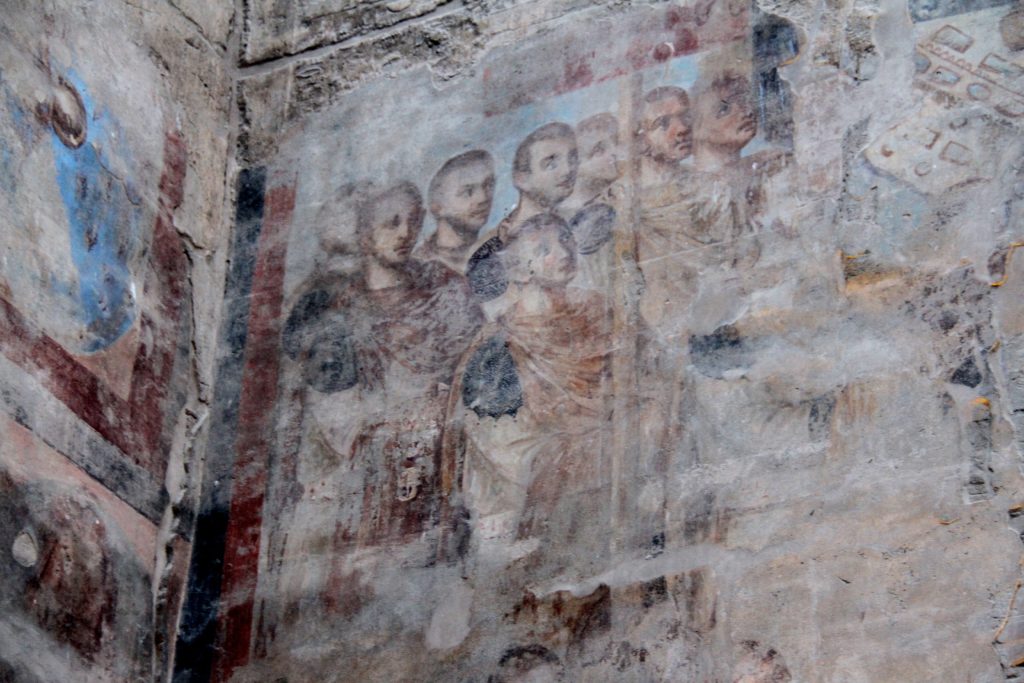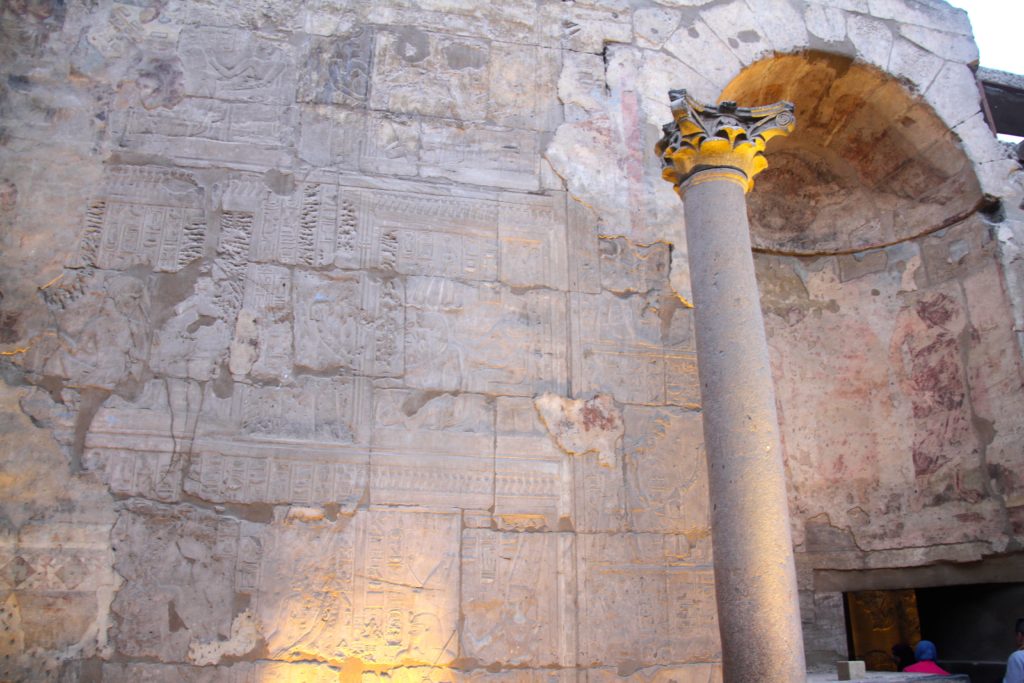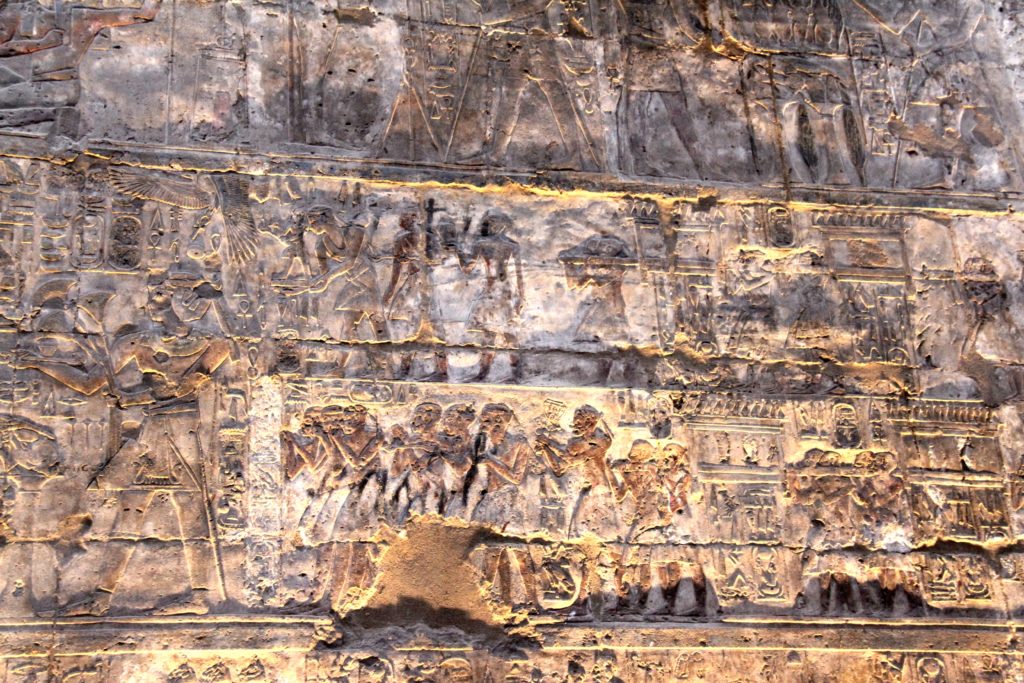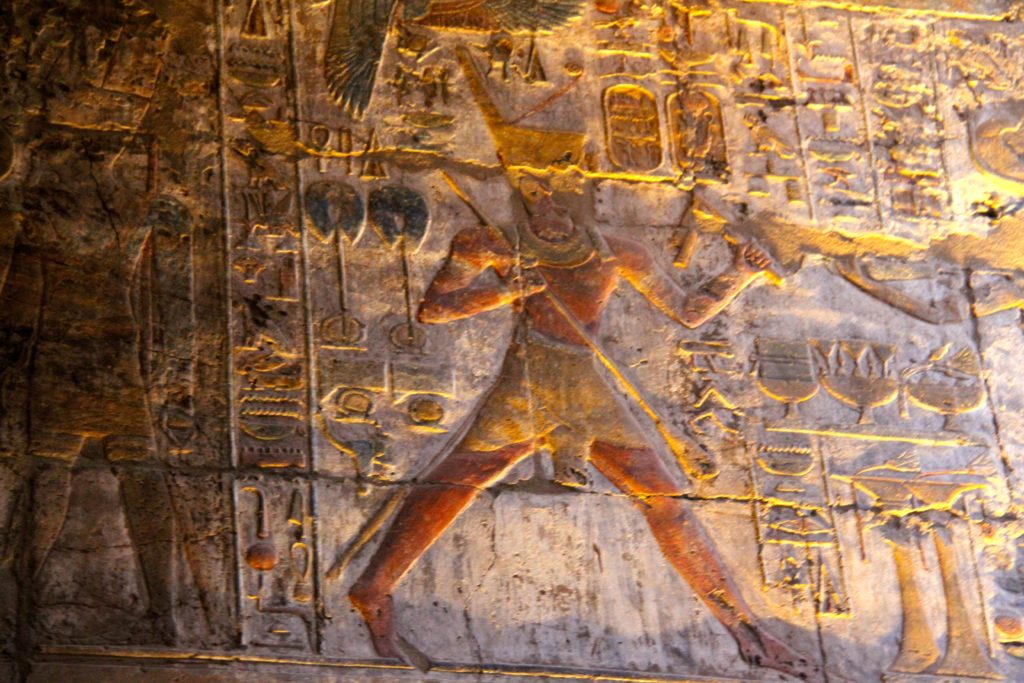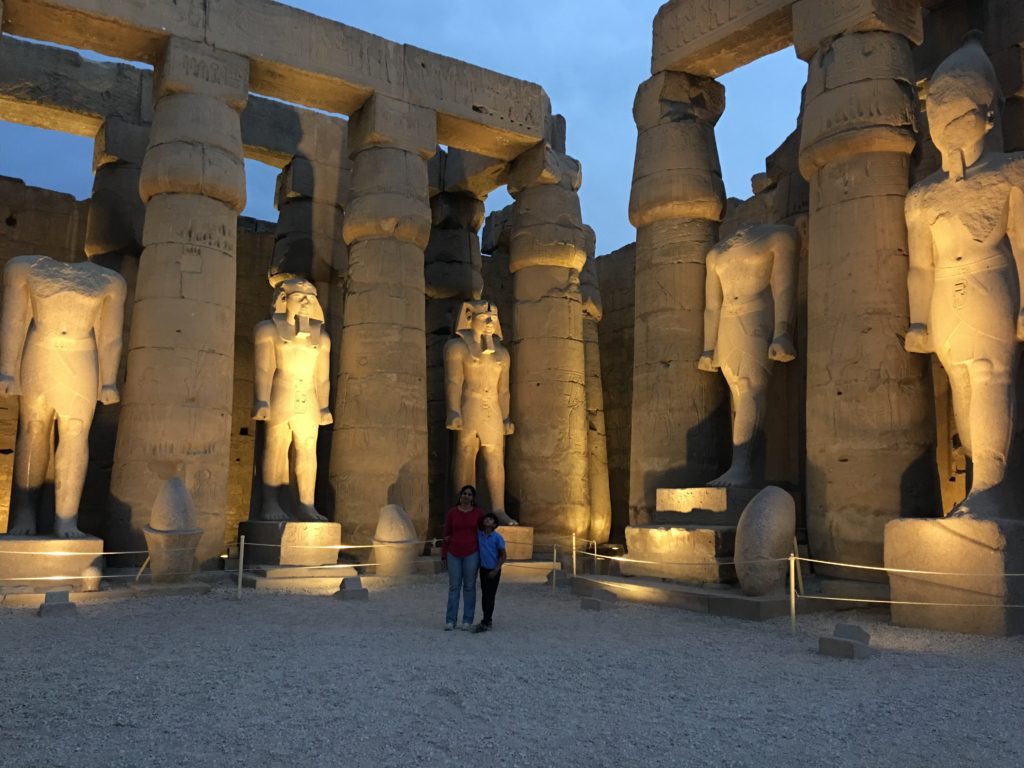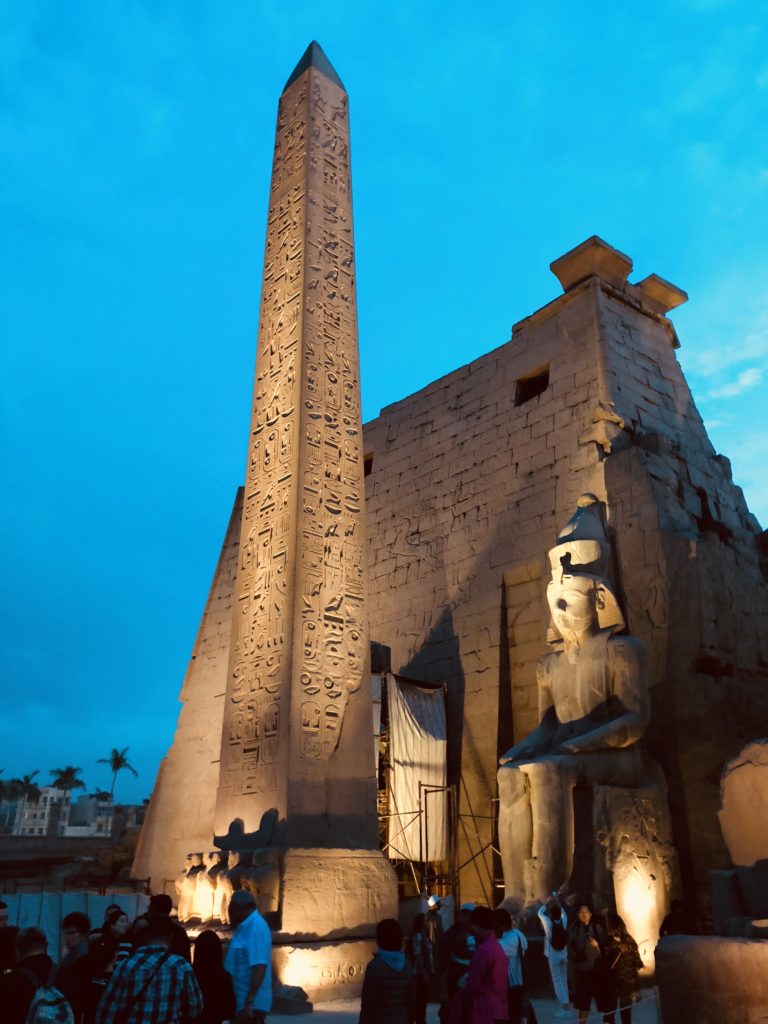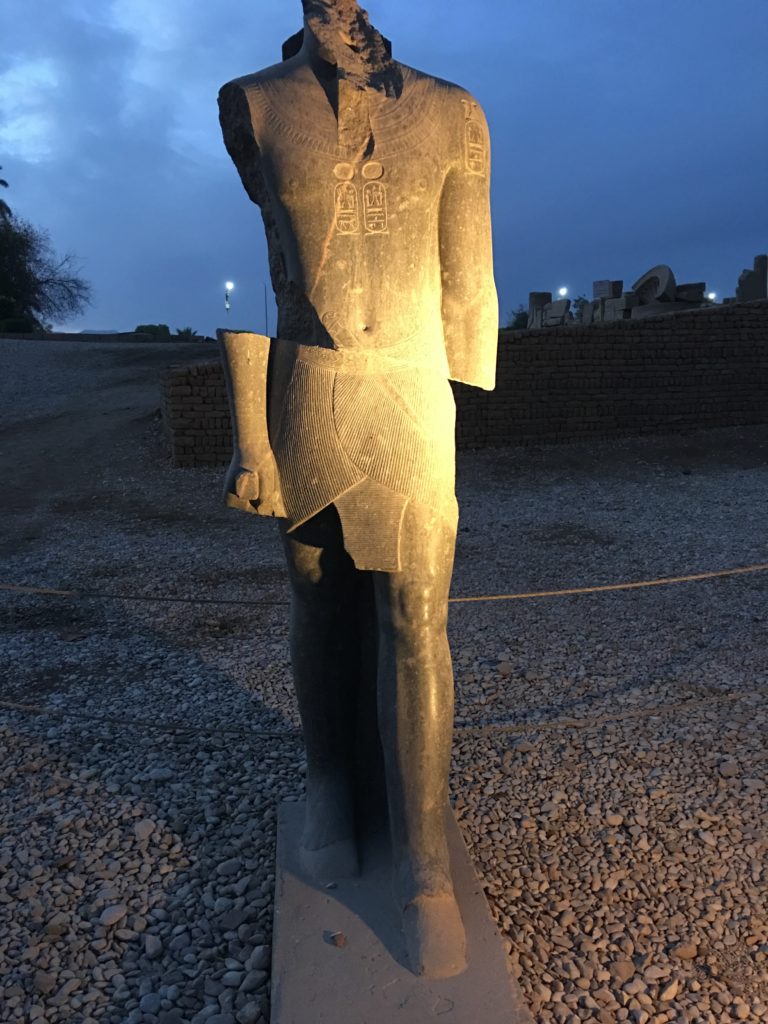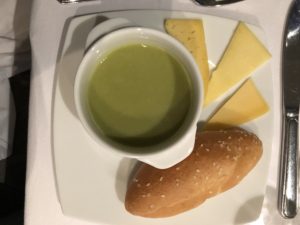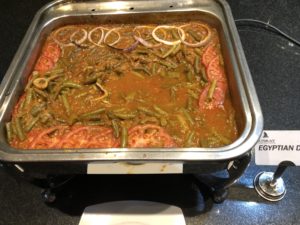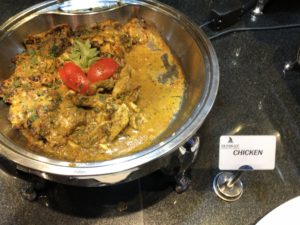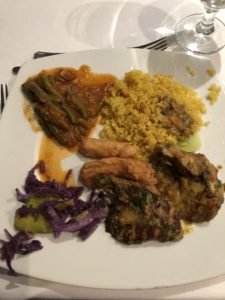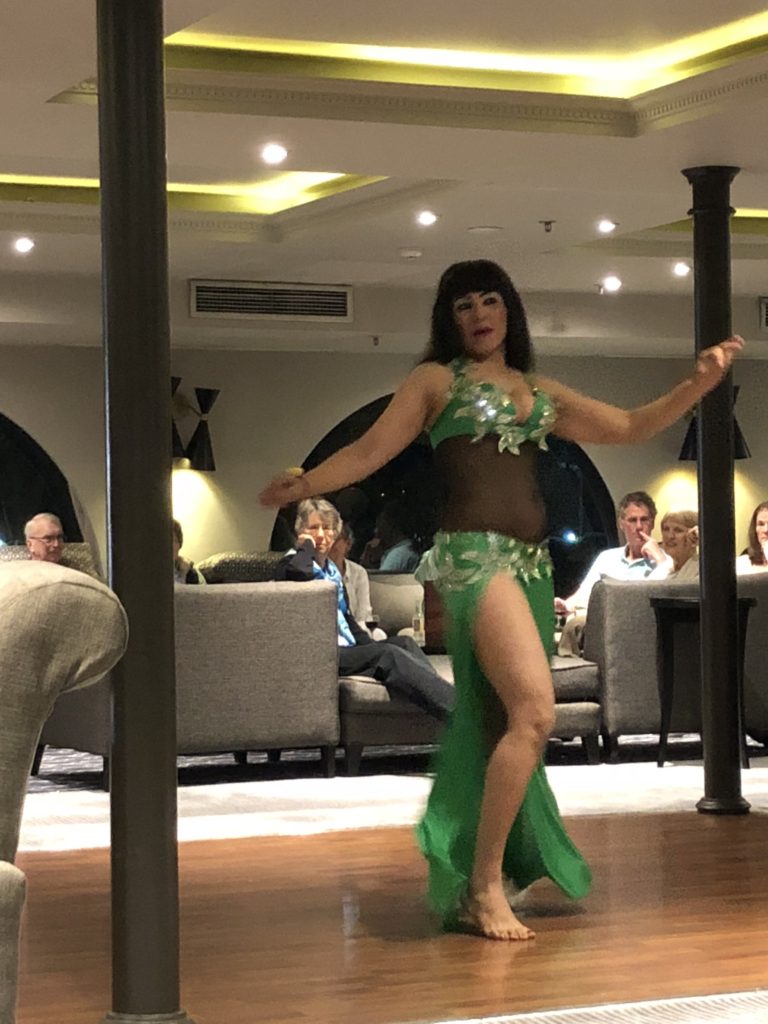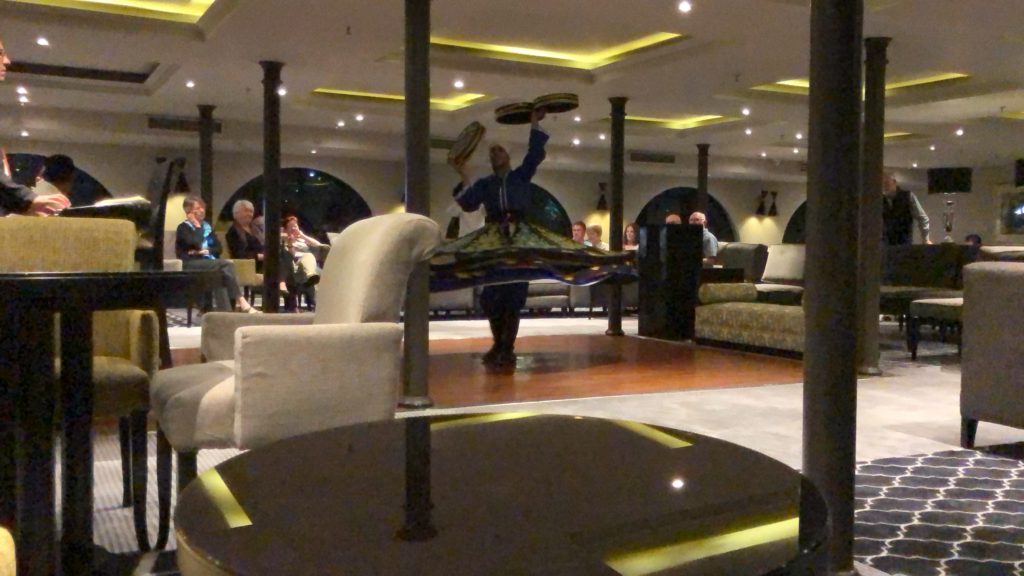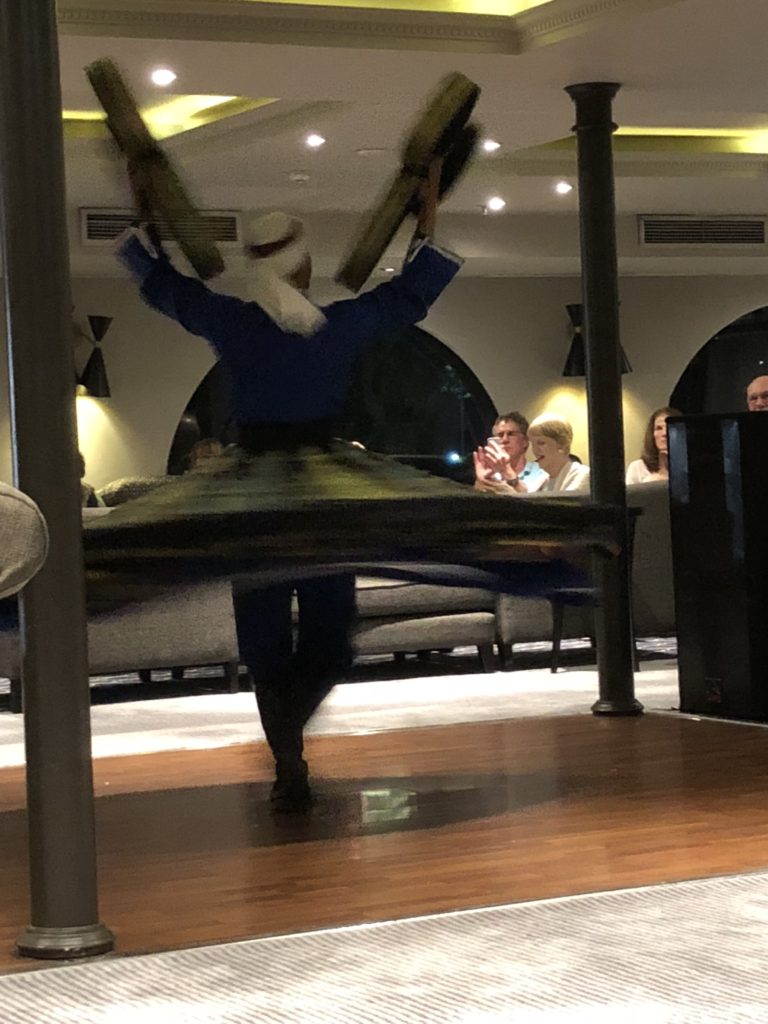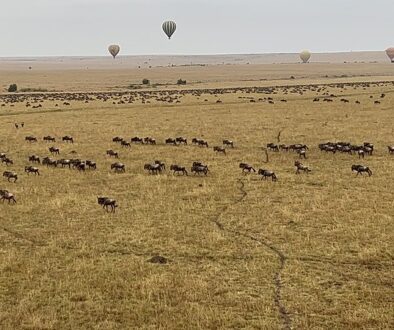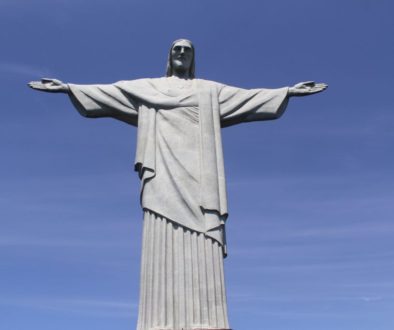Egypt – Nile Cruise Aswan to Luxor – Luxor
Our Day 5
Luxor an ancient city of Thebes. the great capital of (Upper) Egypt during the New Kingdom, and the glorious city of Amun, later to become the god Amun-Ra.
Luxor West Bank has Valley Of Kings – used as cemetery for Pharaohs and East Bank for huge temples Karnak and Luxor temples.
Luxor is also a World’s largest out door museum.
As usual our day started with a nice breakfast. Don’t forget to take water bottles to the dinning hall in cruise. Water bottles are expensive in the cruise and our guide suggested to buy some before sailing. We bought around 5 or 6 big water bottles in Aswan before the cruise started.
Luxor – West Bank – Colossi of Memnon
A quick stop to Colossi of Memnon.
There are two huge statues originally built in the 14th century B.C.E. as part of a mortuary temple for Egyptian ruler Amenhotep III. The Colossi are located in what’s now Luxor, Egypt, but it was called Thebes, the capital of the Egyptian empire at the time. And if you’re wondering why we’re calling them the Colossi of Memnon instead of the Funerary Temple of Amenhotep III or something, when Alexander the Great came into power in 332 B.C.E., he pretty much took over everything (including Egypt). Greeks and Romans started to come in to see the sights, and that’s how the Greek figure Memnon came to be associated with the place and the mysterious dawn-song.
Memnon was a mortal Greek from Homer’s “Iliad”. After his death, his mother Eos (the goddess of dawn) lamented his death by shedding tears or dew drops every morning. The Colossi at Memnon were named because there really was a time when, on some days at dawn, one of the statues would give off a high-pitched sound. Greeks, and later Romans, attributed the “singing” to Eos, Memnon’s mother, mourning for her son.
There is still some excavation going on here..
There were so many Hot air balloon rides near Valley of Kings…
Luxor – West Bank – Valley of Kings
Valley of Kings is a cemetery for Pharaohs and Kings. Valley has mostly limestone and sedimentary rock. There are more than 1000 tombs in this valley and until now around 100 tombs are identified. These tombs are built by excavating deep in the mountains and valley. Lot of tombs are robbed by Tomb robbers in the olden times. Kings and Pharaohs tried their best to hide their tombs from tomb robbers, but even with technology we are trying to find out these days..
Ancient Egyptian Pharaohs believed in life after death. They start building they tombs after they are born. The pharaohs were expected to become one with the gods. As a result, they built elaborate tombs in preparation for their afterlife.
Tombs are filled with cloths, furniture, beds, food, gold and all the things they need in their after life. In Egypt when Pharaoh dies, they make slaves statues and put it in the tomb along with them.
Mummification was a method done to preserve the bodies of the dead kings.
The modern abbreviation “KV” stands for “Kings’ Valley”, and the tombs are numbered according to their order of ‘discovery’, from KV1(Rameses VII) to KV64 (discovered in 2012).
There is a small tram that takes the tourists form visitor center to the main tomb area. There are always not all the tombs opened and they list which tombs are opened on that day. Some tombs have ramps up and some have down, they are all small walks and not that strenuous.
Our ticket is allowed for any 3 tombs that are open on that day. King Tut’s tomb entry is a separate ticket, which we bought. Also, bought photo pass for camera, so that I can take pictures peacefully. There are guards every where checking, do you have photo pass? They expect people to take pictures and give them money, if you don’t have photo pass.
Out guide talked about some of the tombs, things to look at in the tombs like snakes, Monekys representation, Kings after life details and more . He also recommended 3 tombs , KV2 – Rameses IV, KV6 – Rameses IX, KV11 – Rameses III.
KV11 – Rameses III
Rameses III – This is the first tomb we visited and quiet surprised to see the colors of the paintings in the wall. It tells story of their life and how much importance Pharaohs give to after life.
Usimare Ramesses III was the second Pharaoh of the Twentieth Dynasty. He is considered to be the last monarch of the New Kingdom to wield any substantial authority over Egypt.
His Red granite sarcophagus is in Louvre Museum now.
KV6 – Rameses IX
Neferkare Ramesses IX was the eighth king of the Twentieth dynasty of Egypt. He was the third longest serving king of this Dynasty after Ramesses III and Ramesses XI.
Lot of tombs has spells captured from The Book of Dead. This book has a collection of spells to assist a dead person’s journey through the underworld and into the afterlife.
KV2 – Rameses IV
Heqamaatre Ramesses IV was the third pharaoh of the Twentieth Dynasty of the New Kingdom of Ancient Egypt. His name prior to assuming the crown was Amonhirkhopshef.
This is highly recommended tomb and very crowded because the colors are so vibrant and art work intricate. These colors are applied thousands of years and ago and they are still so bright beautiful.
Tomb of King Tut
King Tutankhamun tomb is a separate ticket and it is LE200 per person. This is the only tomb that has line to go inside. There is no pictures inside the King tut Tomb. There is his mummy also in the tomb. He is so short. There is security and monitoring camera’s inside. Also, there is baboon pictures on the wall that our guide talked about. We were lucky to see his mummy as some times his mummy is sent to UK or Framce to take care and process.
This is where 700 kgs of gold is found and so much history with this king.
Temple of Hatshepsut
The Temple of Hatshepsut is not only a memorial temple that honors Queen Hatshepsut, it is also one of the greatest Egyptian architectural achievements. It has 3 levels.
I read some where in the net that “The temple is considered one of the incomparable monuments of ancient Egypt. Also, the temple is aligned to the winter solstice sunrise, which makes it popular with spiritual people and yogis who come to the temple and sit there all day soaking up its energy and meditating. ”
We were waiting for shopping in Luxor for buying some Granite Souvenirs at Alabaster factory. After a long bargaining we bought a Pyramid , Anubis status, Horus status and Blue Nefertiti in lapis lazuli. Everyone were waiting for us in bus while we were shopping.
Reached our cruise and had another buffet lunch. There was Egyptian special dishes every day in the buffet like small okra curry, green leaf curry, Califlower fry, Duck curry one day, Egg plant curry. There was also atleast 2 items of either fish/chicken/pork/beef. Taste was good as well.
Luxor – East Bank – Karnak Temple
Karnak Temple is the – Largest Religious Site Of The Ancient World
While the oldest structures date back to around 4,000 years ago, most are considerably younger, keeping in mind that the city of temples formed over a period of 2,000 years. Originally, it was actually also part of Thebes, the ancient Egyptian capital. Today, it is also a protected UNESCO World Heritage Site.
Karnak was the official home of the god Amun.
As with so many things at Karnak Temple complex, the hypostyle hall is massive, covering an area of 54,000 square feet, and home to no less than 134 huge columns measuring 23 meters in height. It is only when you actually stand inside the hall amongst its forest of columns that you truly get to appreciate just how wealth the New Kingdom had and to what extend Amun was revered.
There is a path way for 3KM from Karnak Temple to Luxor temple lined on both sides with carved sphinxes.
Luxor Temple
Luxor Temple is one of six ancient temples found in the vicinity of Luxor. It was built by Amenophis III for worshiping the gods Amun, Chons and Mut
Luxor temple was built in 1400 BCE during the reign of Amenophis III and was known to the Egyptians as the Southern Sanctuary. Later, Tuthmosis III and Alexander the Great both built chapels on the grounds, located just to the rear of the main temple. The temple, as well as the other structures at the site is all built from Nubian sandstone that was transported to the site from quarries in southwestern Egypt. During the Roman period, the temple was used almost exclusively as a fortress as well as serving as the headquarters of the Roman Government.
One of the most awe-inspiring features at Luxor Temple is it imposing colonnade comprising a total of 14 columns that are topped with papyrus shaped capitals. Each column is roughly 23 meters high, with a circumference of around 10 meters. Both sides on the colonnade are enclosed with masonry walls that are covered with reliefs showing scenes relating to the festival of Opet. The colonnade, along with the decorated walls was completed during the reign of King Tutankhamun and King Horemheb.
That’s our Luxor west and east bank trip.
Another dinner buffet in Movenpick Sunray cruise. Last dinner in cruise..
Live music with Belly Dancer and Egyptian Tanoura (Spinning) Dancer. Tanoura dance is done by men spinning with some drums, and lights. He was almost spinning for more than 15 mins non stop in same direction doing something. For me spinning 3 or 4 rounds will make fall…15 mins no way..
